After a short 2.5 hour flight from Mumbai, India we arrived in Kathmandu, Nepal – it was so fantastic to see see the snow capped Himalayas as we flew in.
We started our time in Kathmandu by spending a couple of day orientating ourselves and exploring the city and observing the Nepalese way of life – plus getting a new pair of glasses for Helena (10% of the price that she would pay in NZ). The temperatures were a really comfortable 28 degrees and we even had afternoon showers that brought down the humidity. We stayed at a Blue Mountain Guest House, which was so nice, we’ve decided to stay another 4 times as we’re using Kathmandu as a base
We only really made one ‘tourist’ trip into the city to visit Swayambhu (also known as the Monkey Temple), which is a complex consists of a stupa, a variety of shrines and temples on top of a hill – which meant climbing 365 steps. It is one of the most sacred religious sites in Kathmandu for Buddhist (Newars), and for Tibetan Buddhists it is the second most important. On the stupa itself (which was being renovated), between the two eyes, there is a third eye which is also known as Wisdom Eyes or tesro netra (third eye) in Nepali. It was also funny that a local Nepalese man came up to us at the bottom of the hill and took us in the back entrance, so we didn’t need to pay the 200 Rupee (NZ$2.75) entrance fee – so nice of him.
After 4 days in Kathmandu we jumped into a cab and headed 15. Kms to the town of Bhaktapur (altitude 1,342 metres) to stay at with the Pradhan family at Pradhan House – Home Stay, a beautiful; Nepalese home, with a courtyard garden. Bhaktupor is classed as a ‘living’ museum displaying Newari culture, and as such it cost us 1,800 Rupees (NZ$22.85) just to enter enter the town., but this did provide us with full access to the entire town. Although the town was significantly impacted by the 2015 earthquake (8.1) and it’s an amazing sight to see the restoration of the temples, wells, homes and pagodas (this is where the 1,800 Rupees goes, as they focus on restoring one building at a time). We were also fortunate that we arrived in Bhaktapur on 18 September to see the Teej Festival, which was an amazing sight to see all the women dressed in bright red sari’s, singing and dancing.
The key areas that we visited in the town included:
Dattatraya Square is one of the oldest squares of Bhaktapur with many beautiful and stunning heritage buildings, including; Dattatreya Temple, Bhimsen Temple, Laxmi Narayan Temple, Pujar Mathh ( Woodcarving/Brass Museum) and the Peacock Window (made in the 15th Century).
Durbar Square this is the main square of the city. The entire area is a mixture of stone art, metal art, wood carving, and terracotta art and architectural showpieces. This includes the Golden Gate, statue of King Bhupatindra Malla, National Art Gallery, Palace of 55 windows, Vatsala Temple, Big Bell, the bell of barking dogs, and Pashupatinath Temple, stone temple of Siddhilaxmi, octagonal structure “Chyasinhmandap” and Phasi Dega (Silumahadev Temple).
Pottery Square is a wide open brick courtyard was awash with a mix of small grey and brownish red clay pots, all sectioned off, with a person tending to each pot, turning each to face the sun at new angle, dipping them into a bucket of colored water or gathering them for ‘firing’..
Taumadhi Square is one of the busiest squares of Bhaktapur and is home to Nyatapolia Temple (built in 1702), which is the tallest pagoda styled temple in Nepal. It also houses several other temples (Til Madhav Narayan andAgam Chhen), water conduits and platforms (Dabus/Dabalis).
We also decided to do a hike upto Suryabinayak Temple and Pilot Baba Ashramh covered 15 kms (or 21,000 steps). Please note one of the photos below does depict the head of a goat that had been sacrificed.
In the short time we have been here, there are two other things to note about Nepal. The first is the fact the Nepalese people are so humble and amazingly friendly. The second is the food – DELICIOUS, DELICIOUS, DELICIOUS; Momo’s (Chicken, Buffalo or Vegetable), Juju Dhau (Sweet Kurd), Thukpa, Sel Roti, Curry, Burgers!! and Dal Bhat (aka Power Food).
Our next stop will be Nagarkot, which is at an altitude of 2,135 metres, which is a further 15 kilometres into the Kathmandu Valley, heading east – before heading back to Kathmandu.
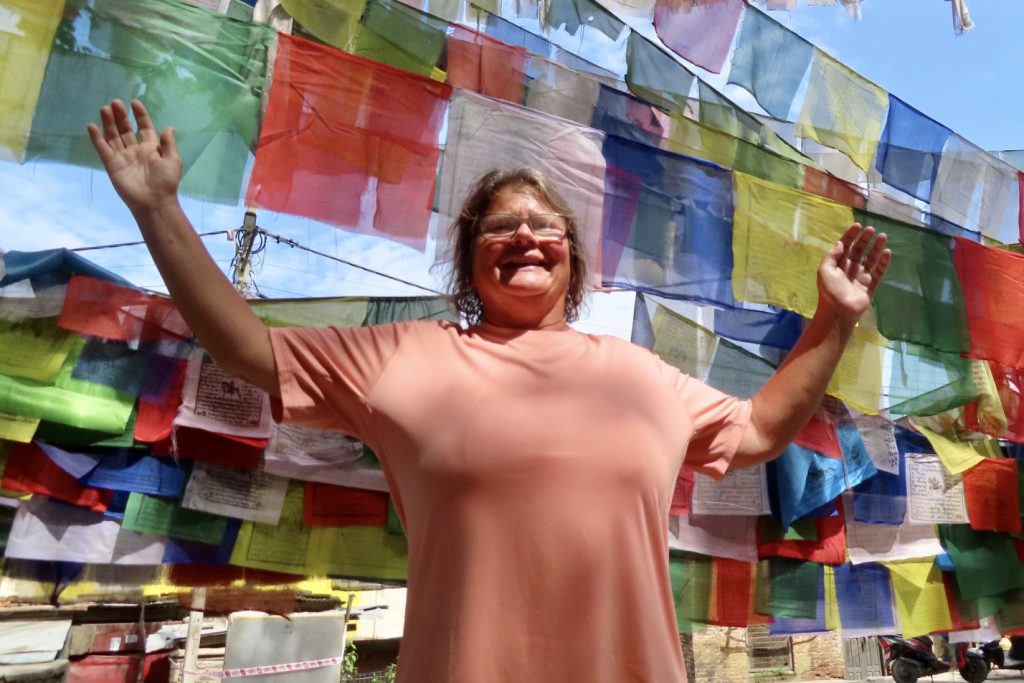
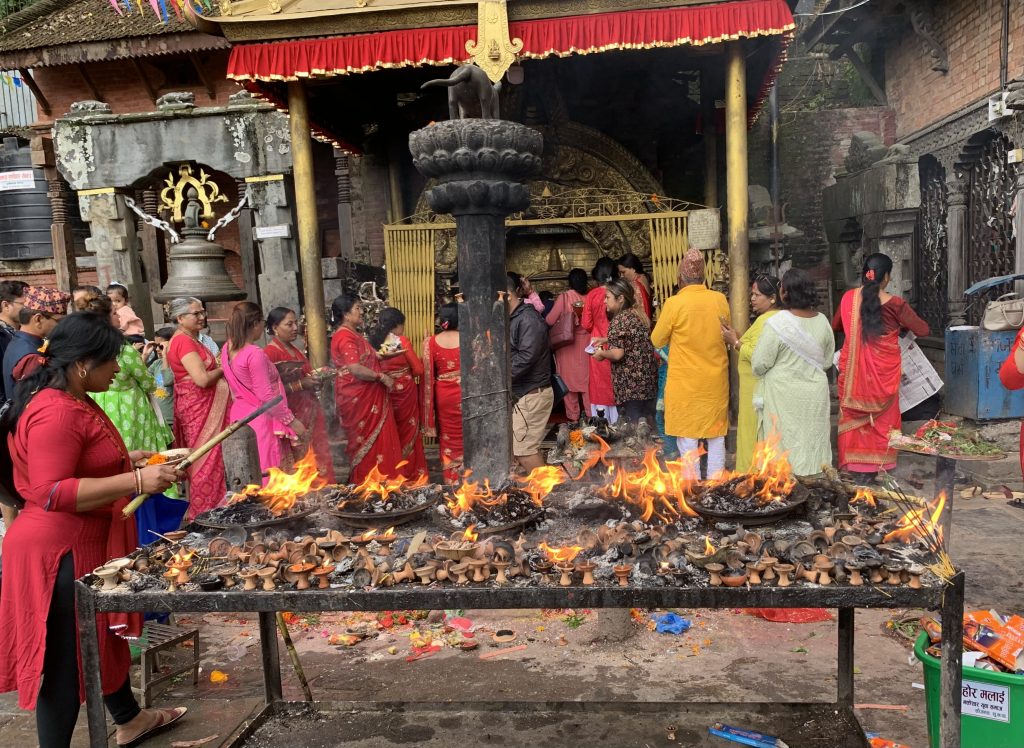
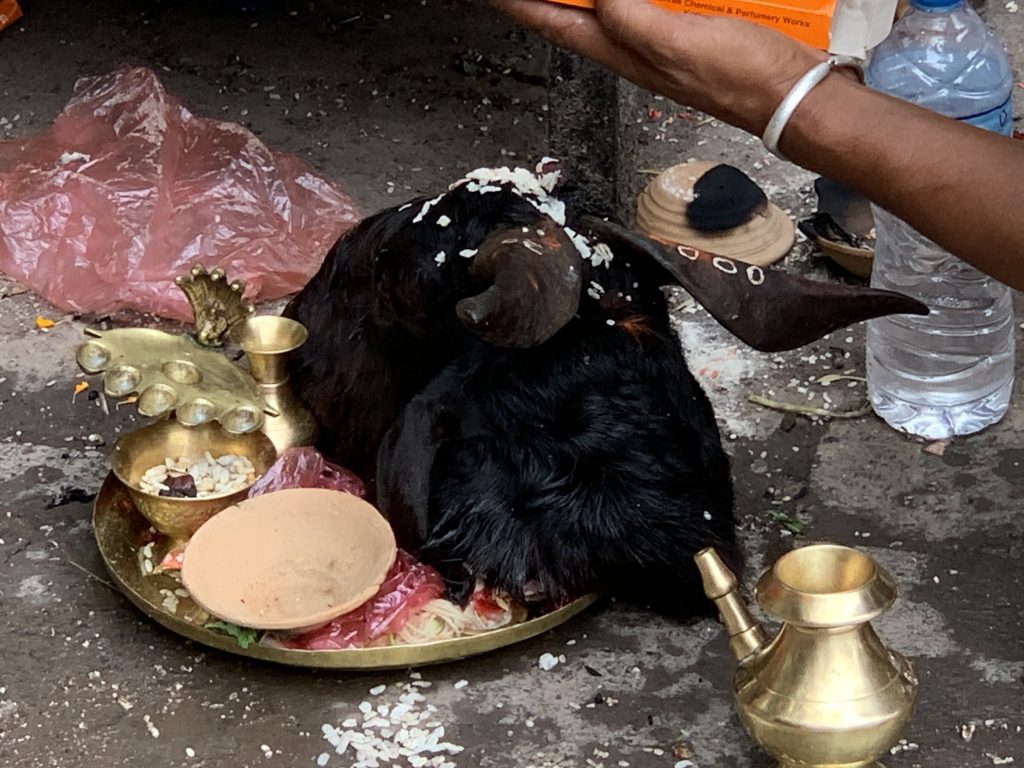
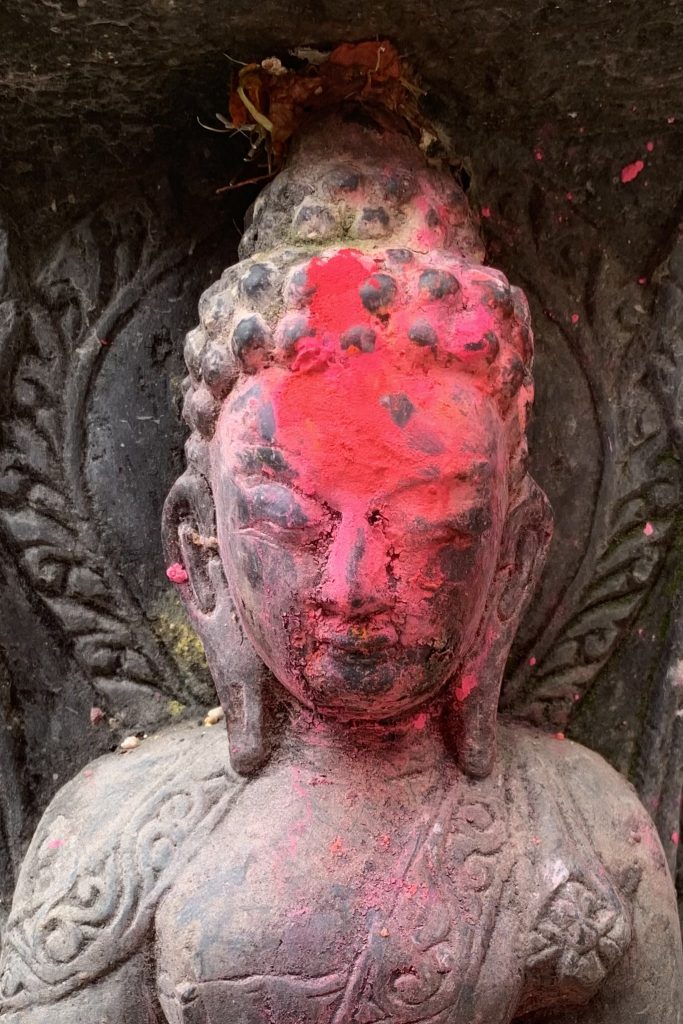
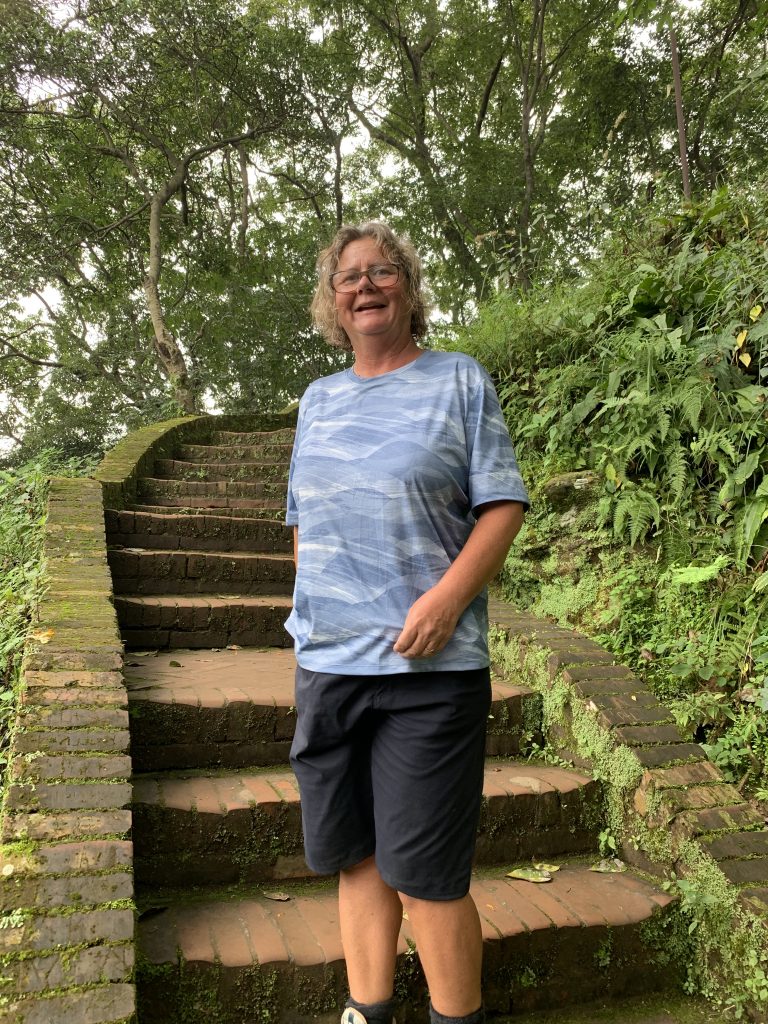

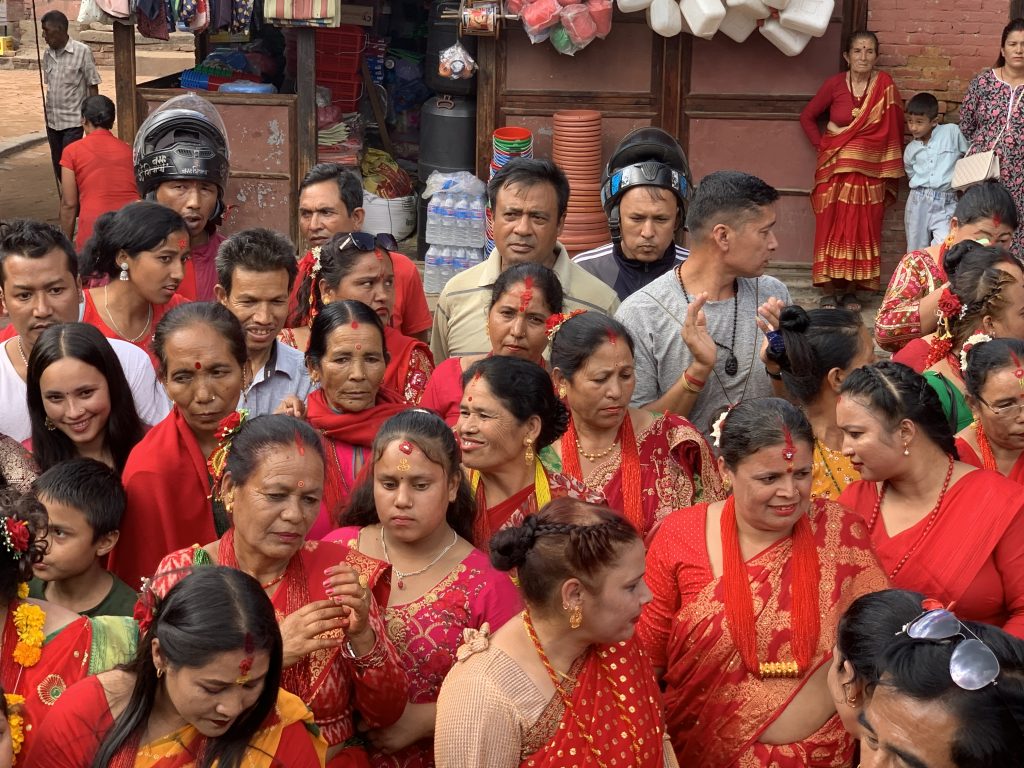
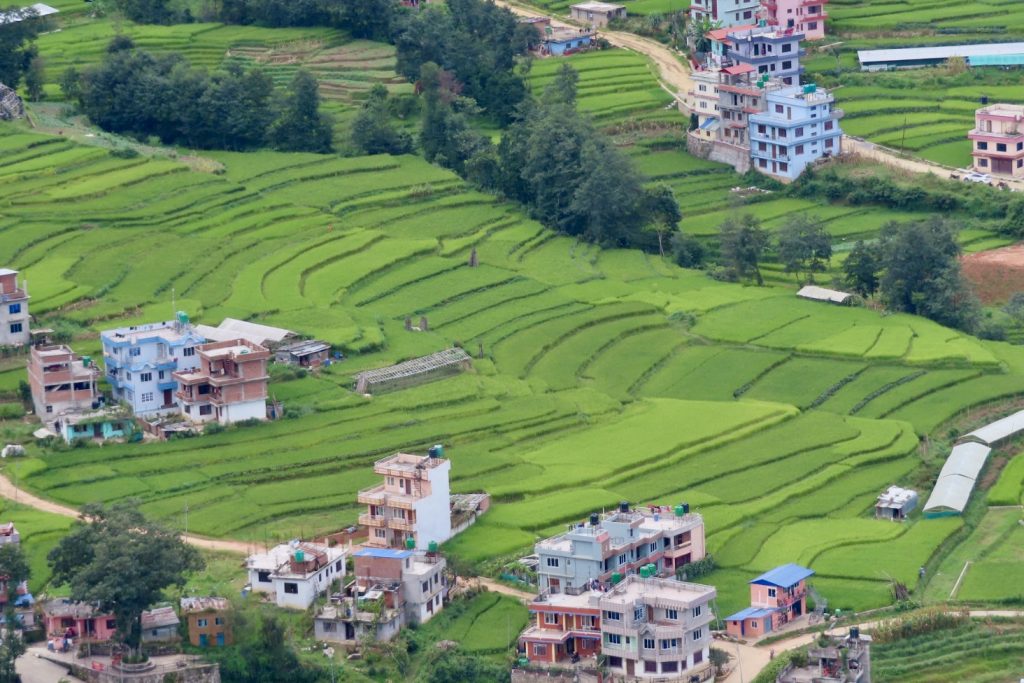
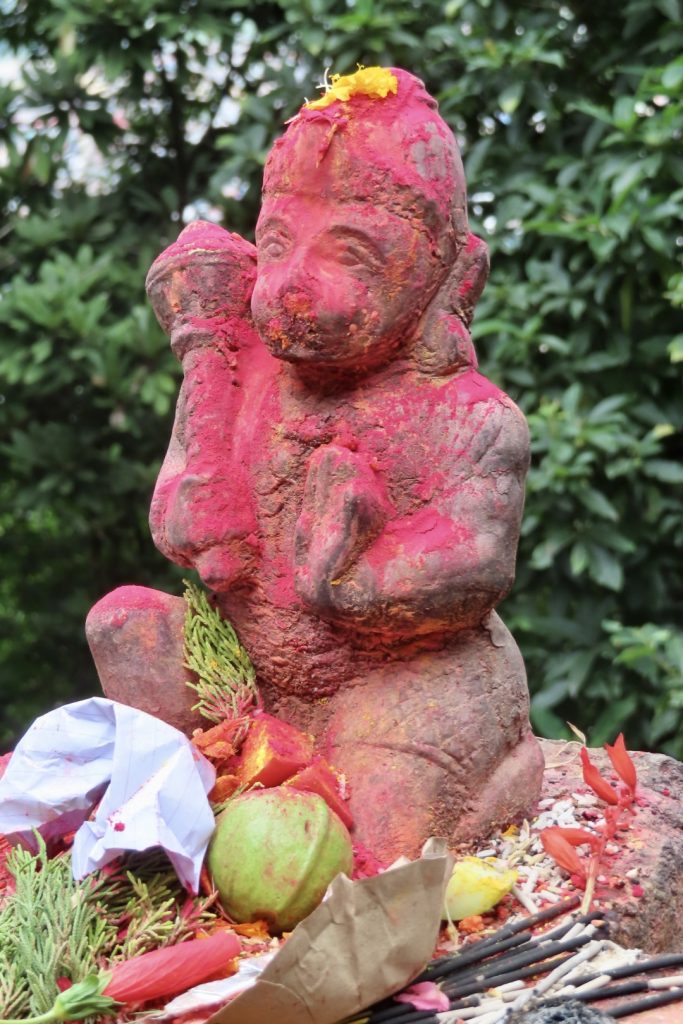

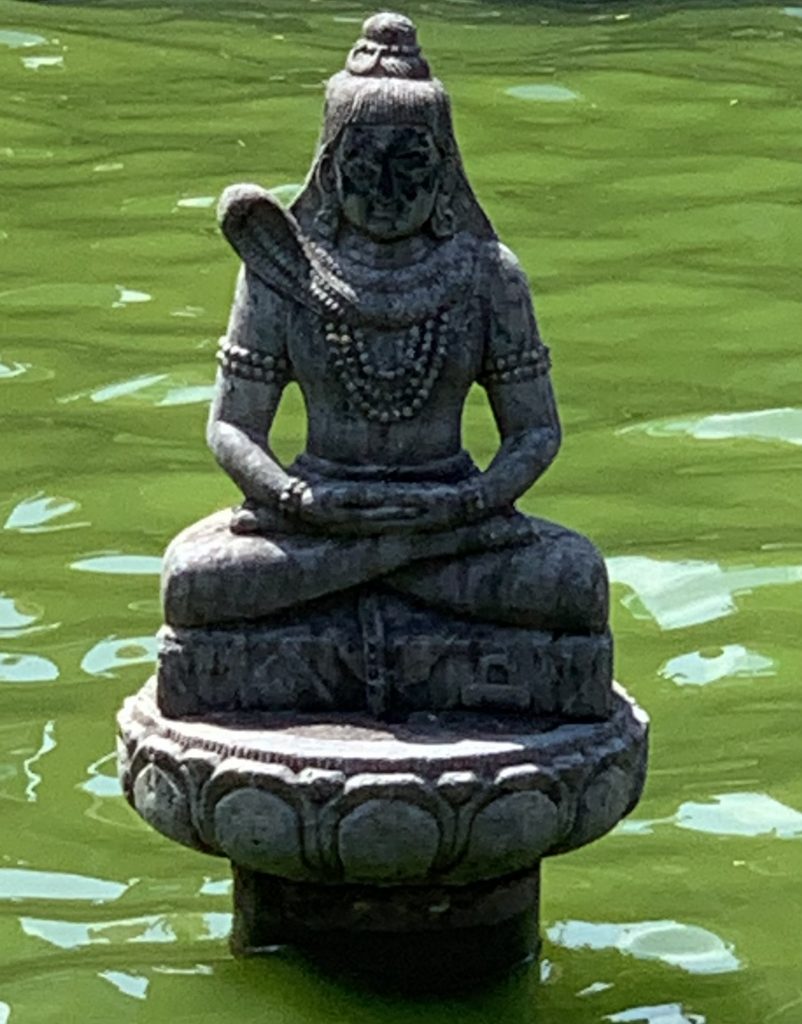
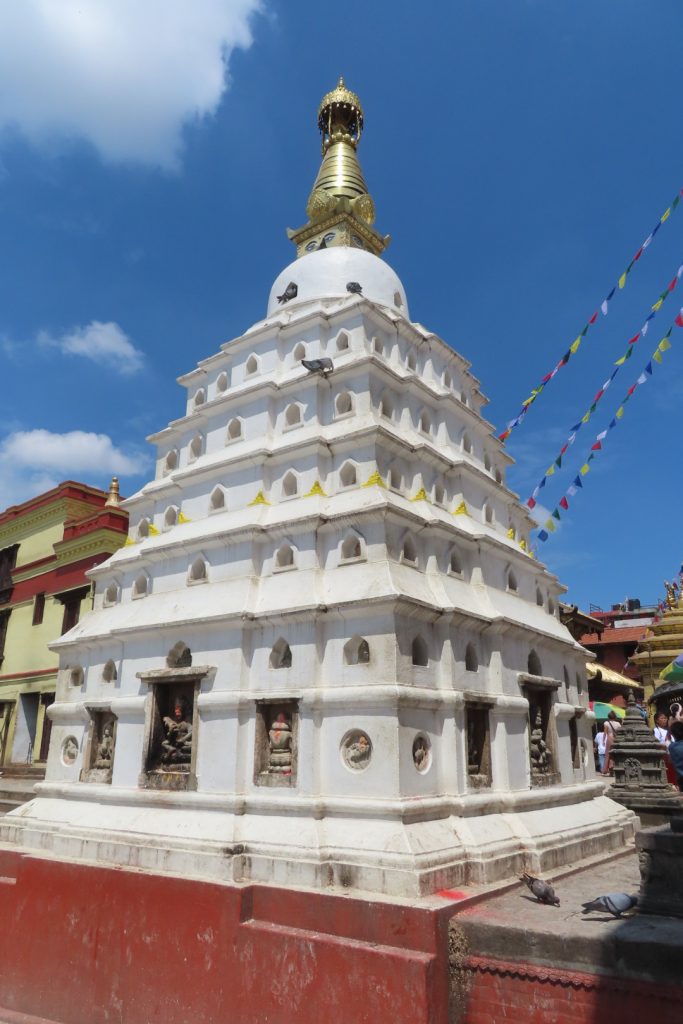
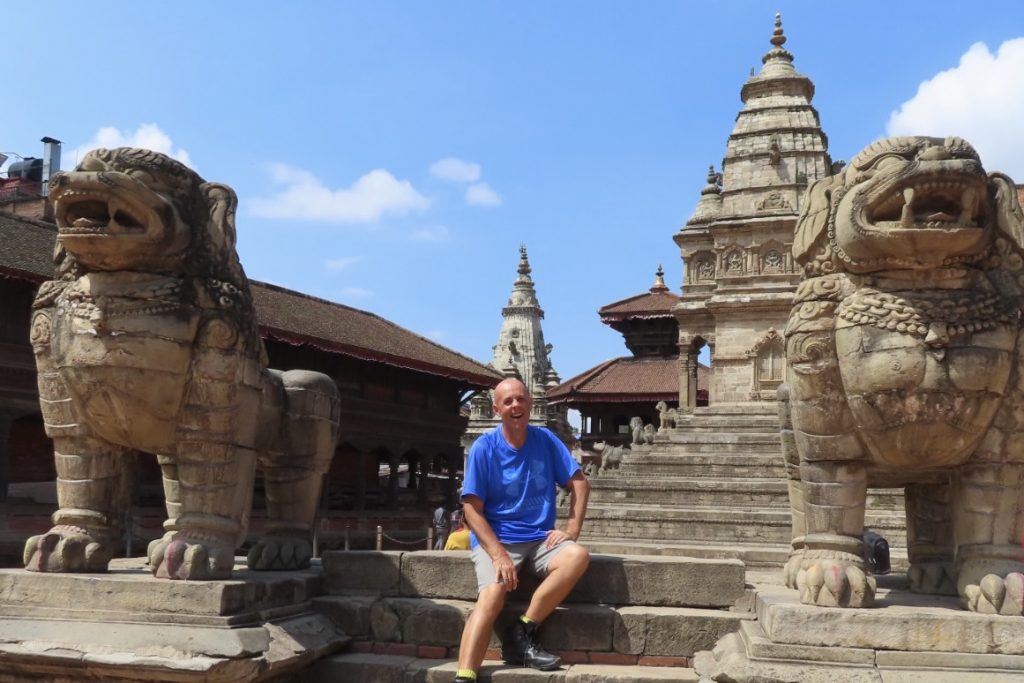
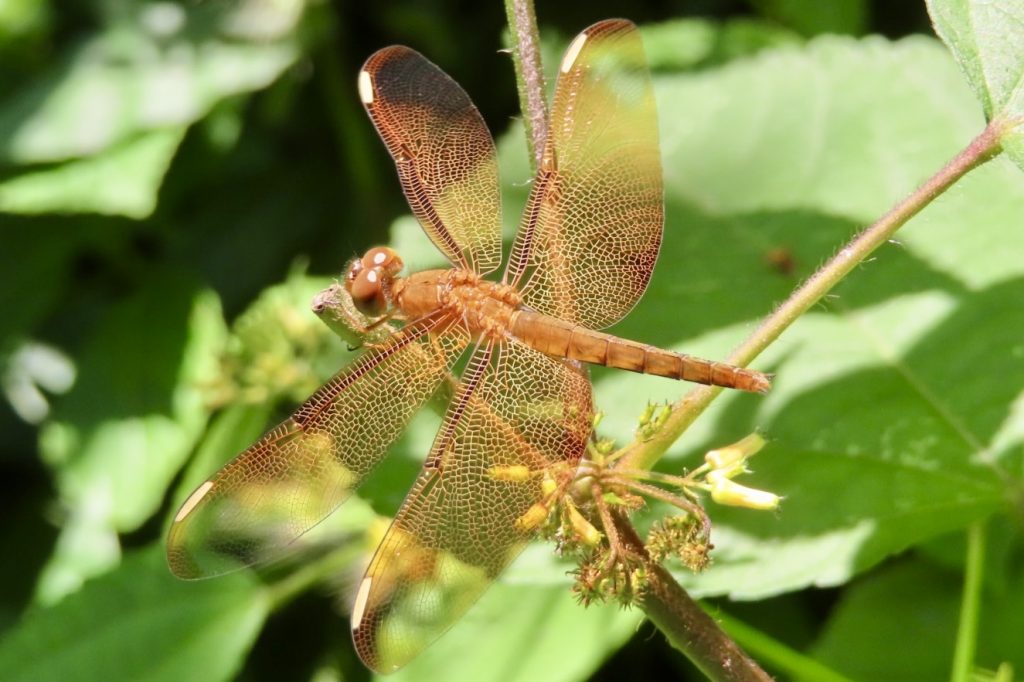
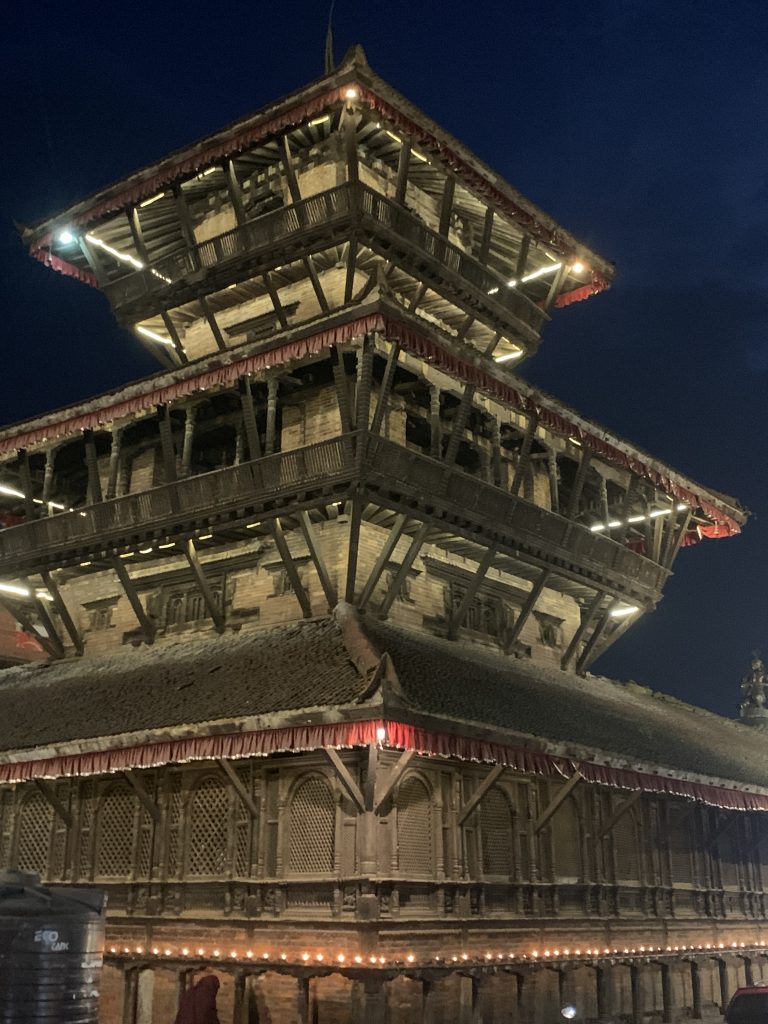

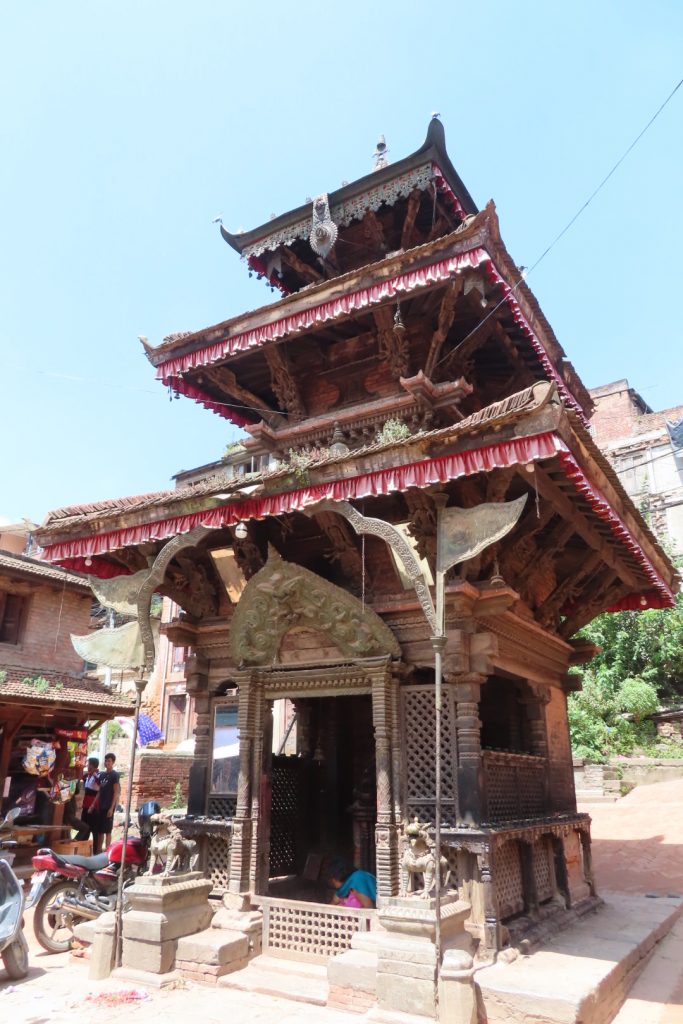

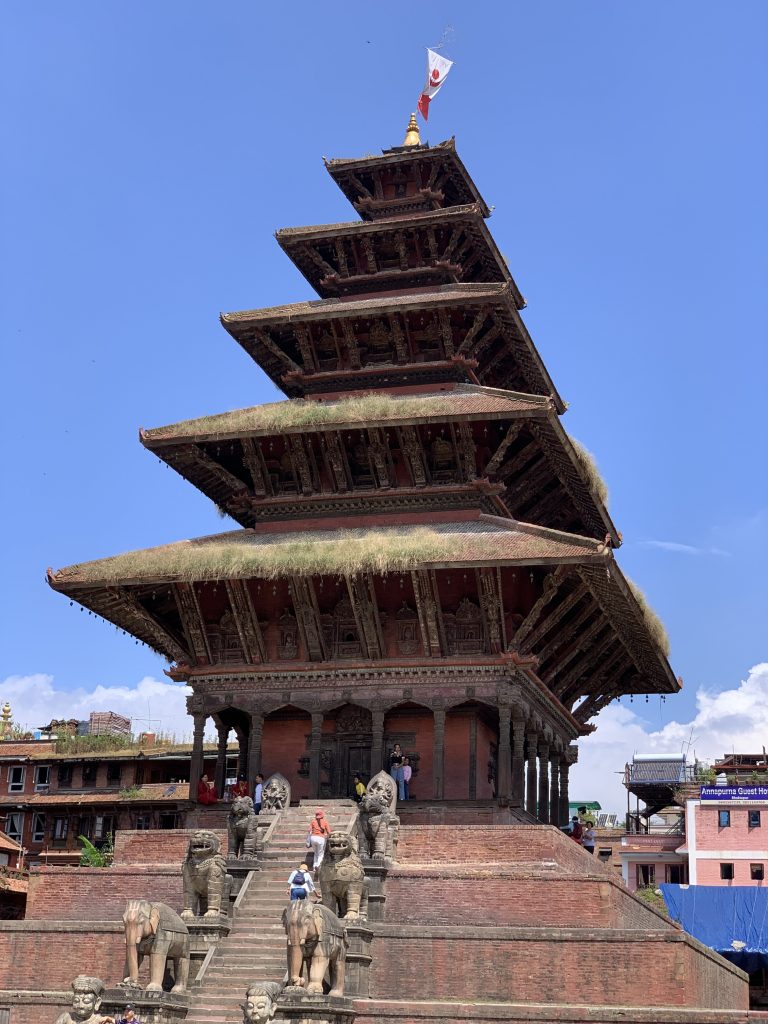
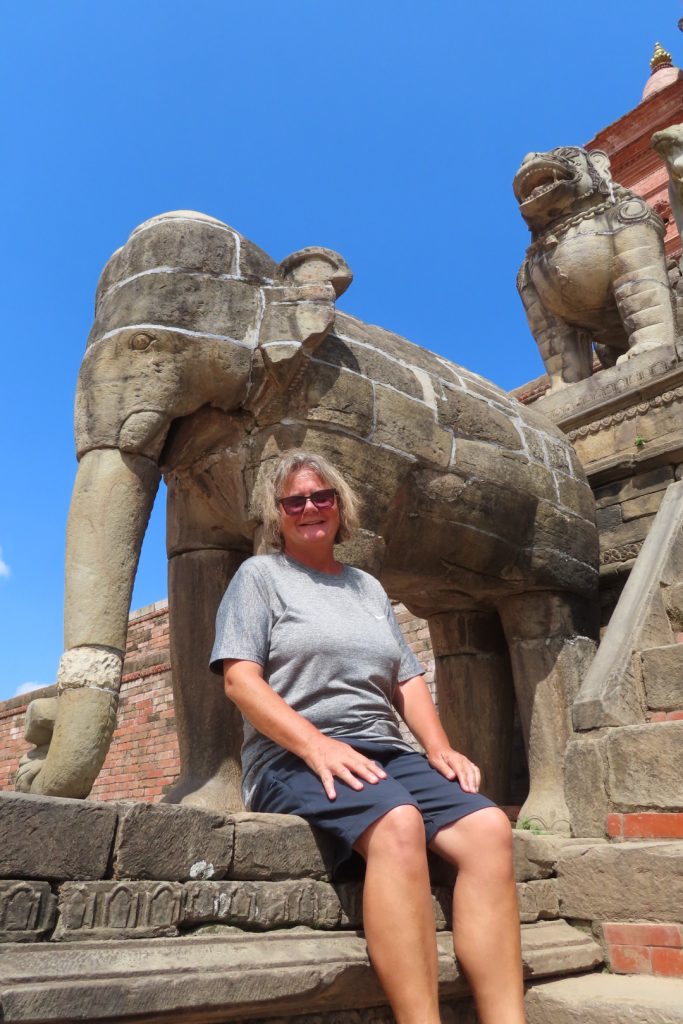
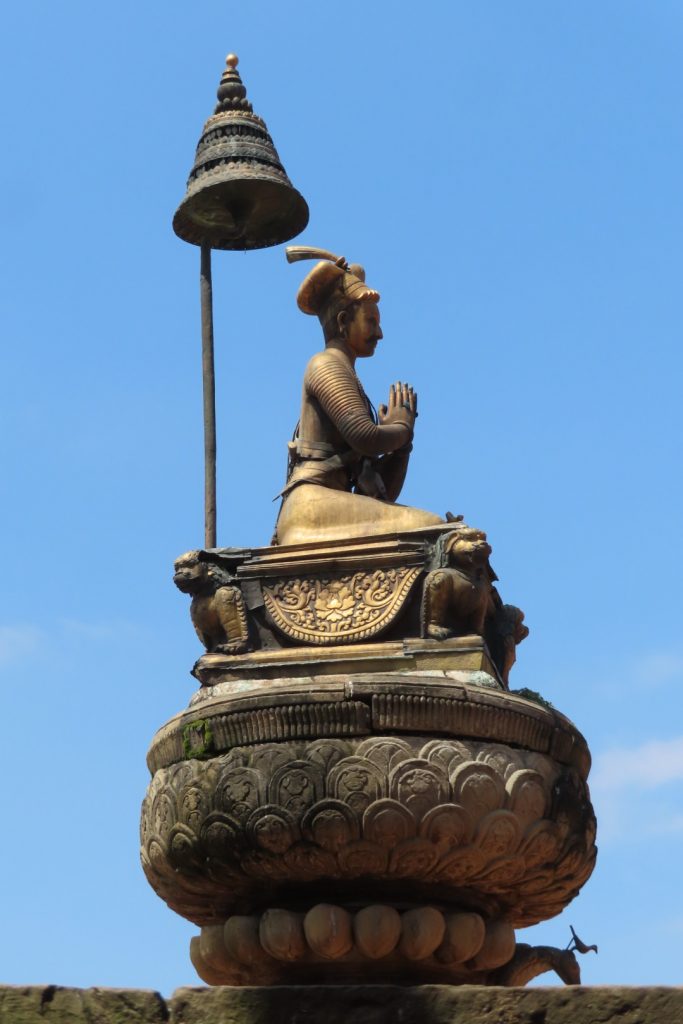
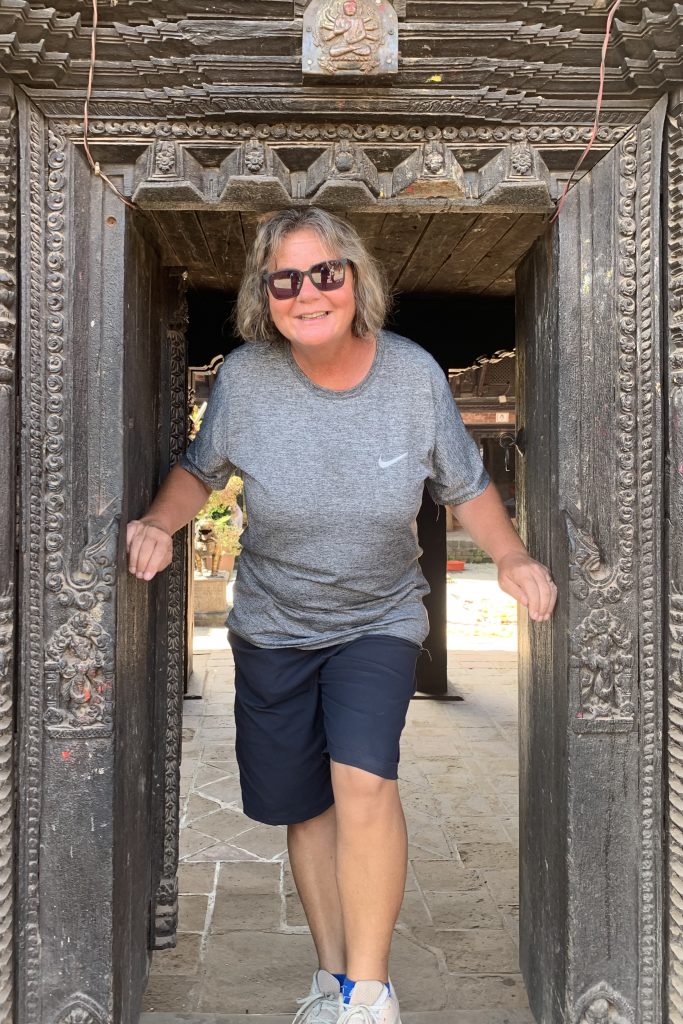
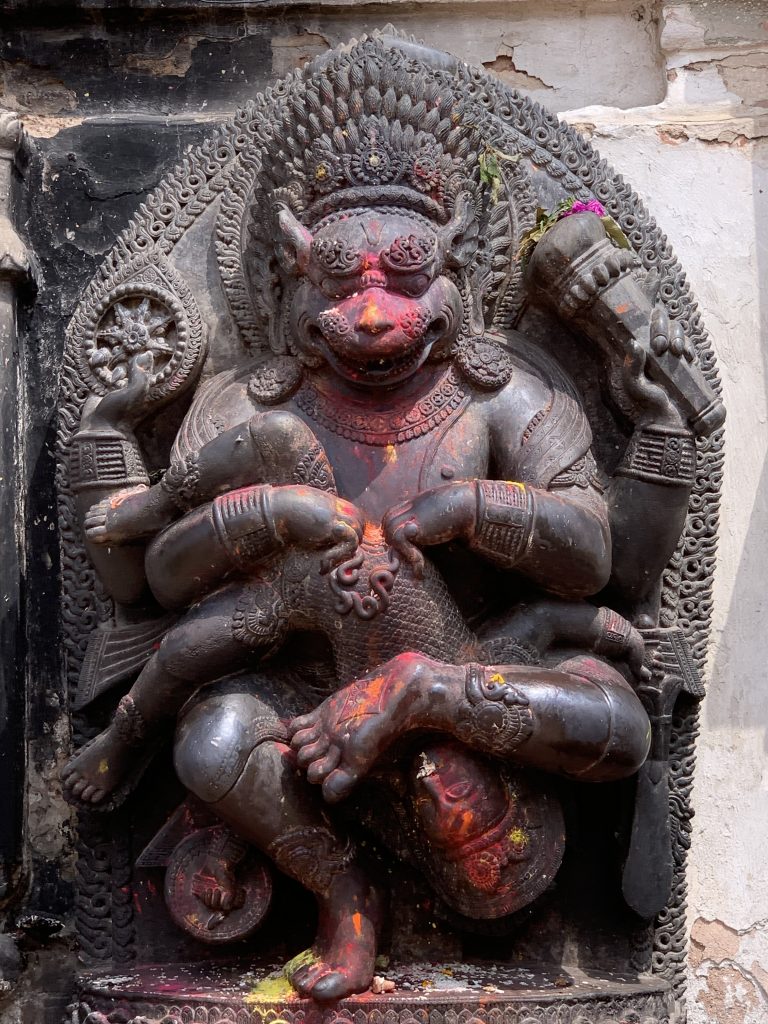

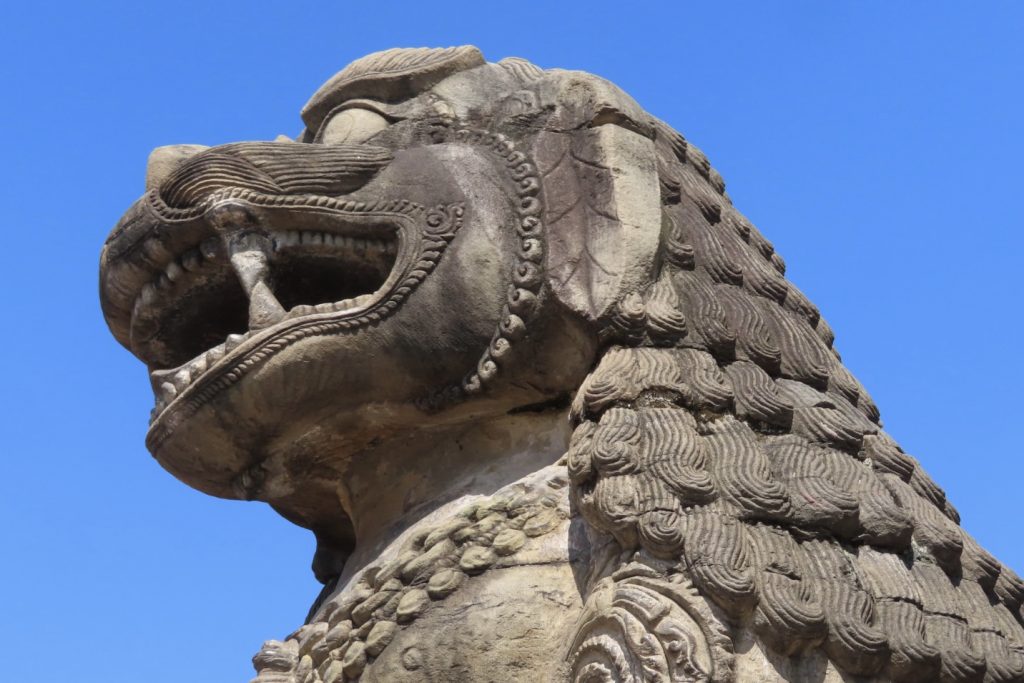
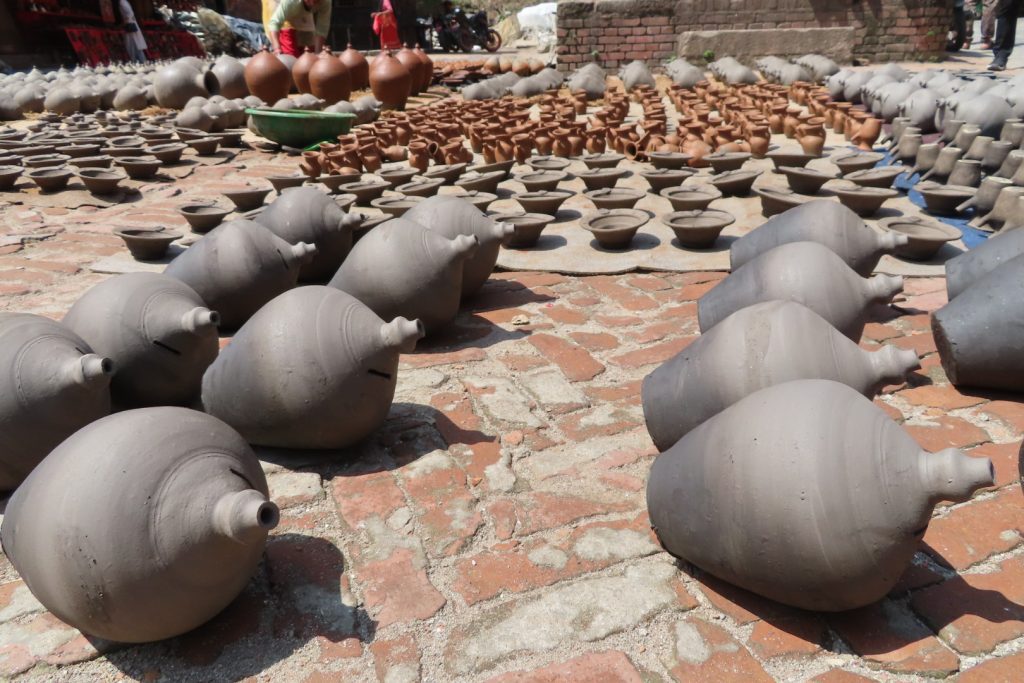
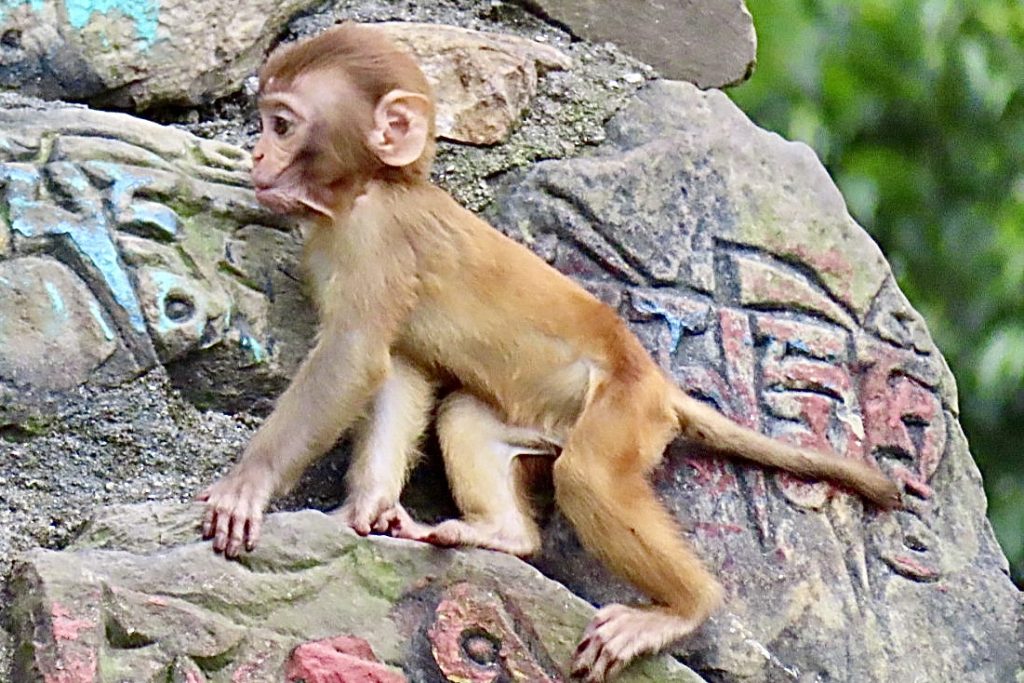
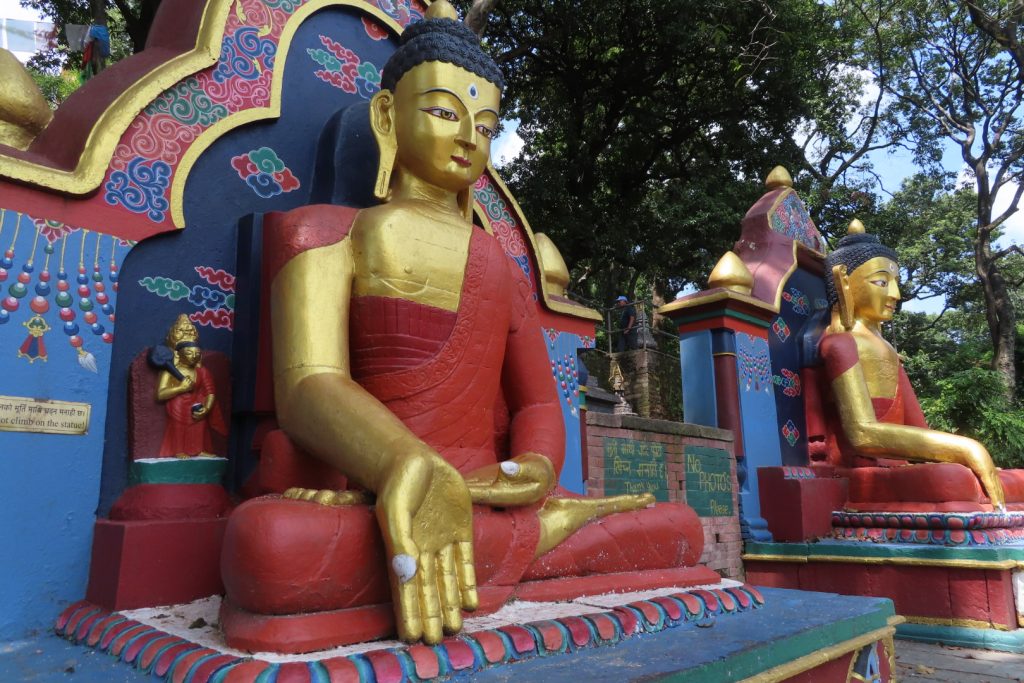
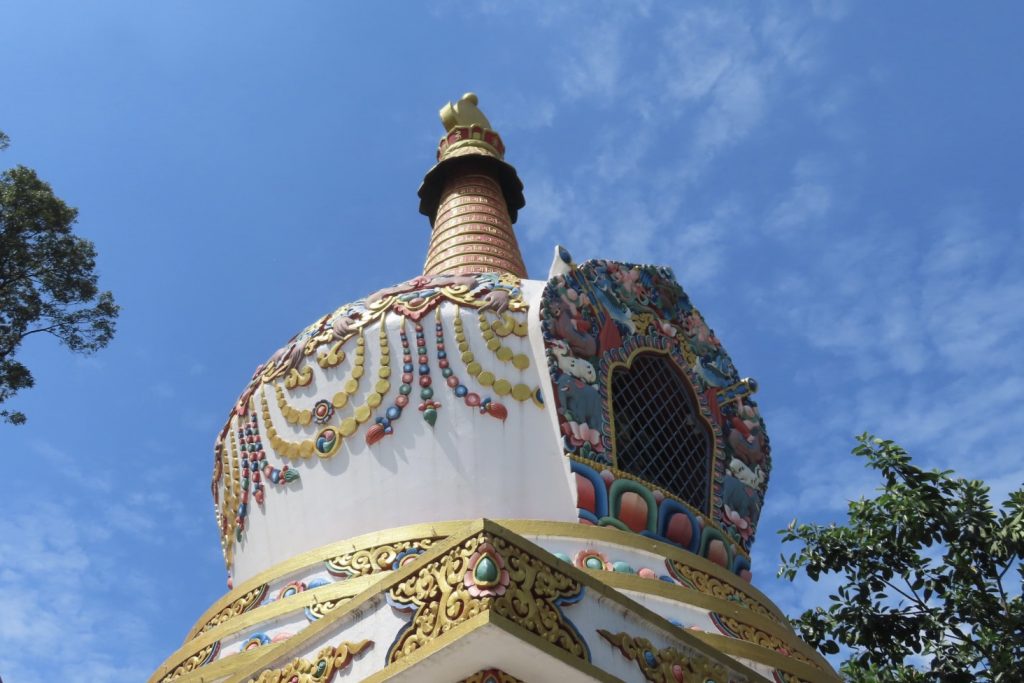
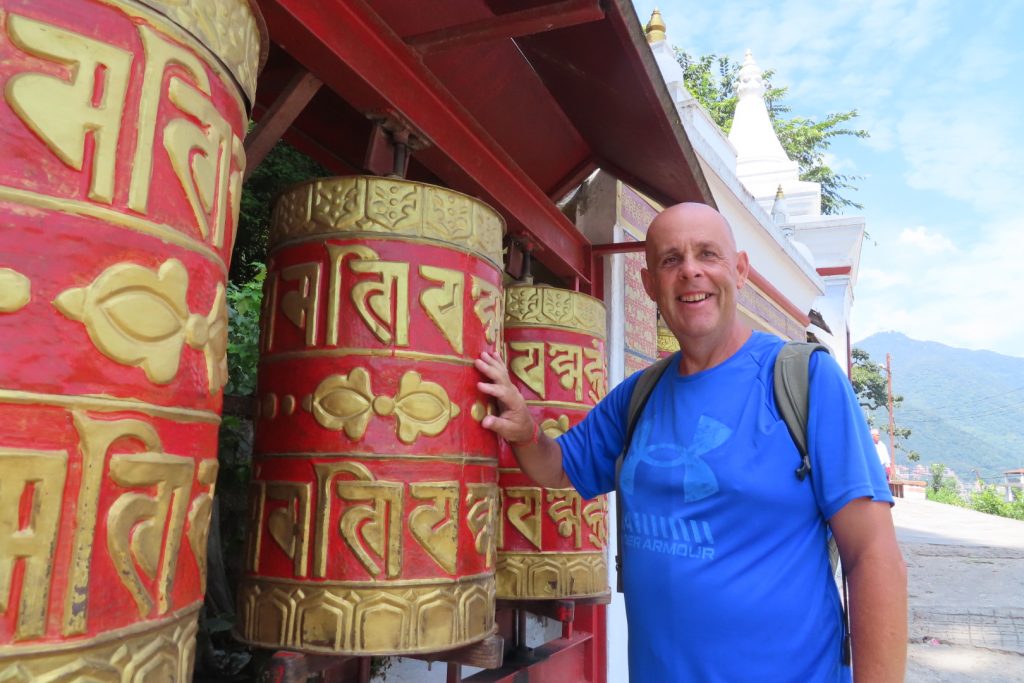
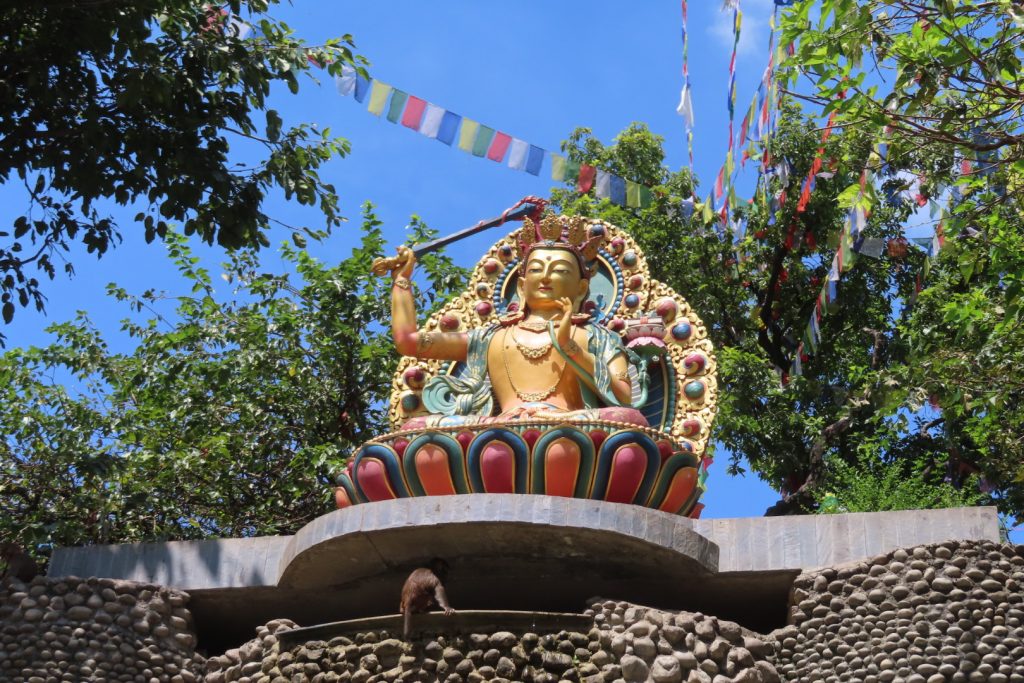
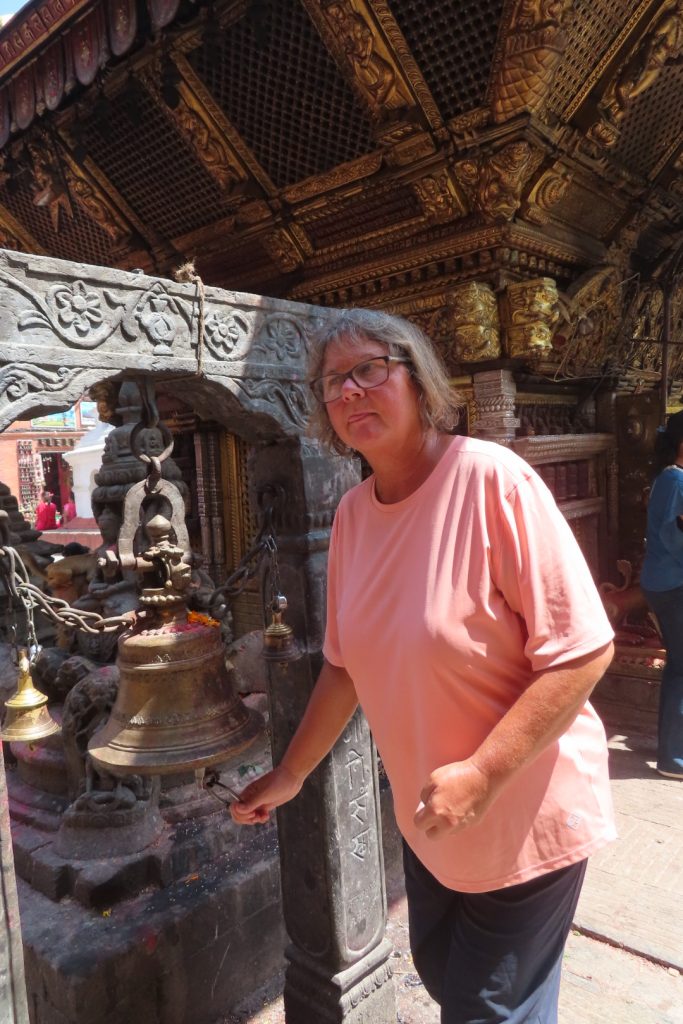

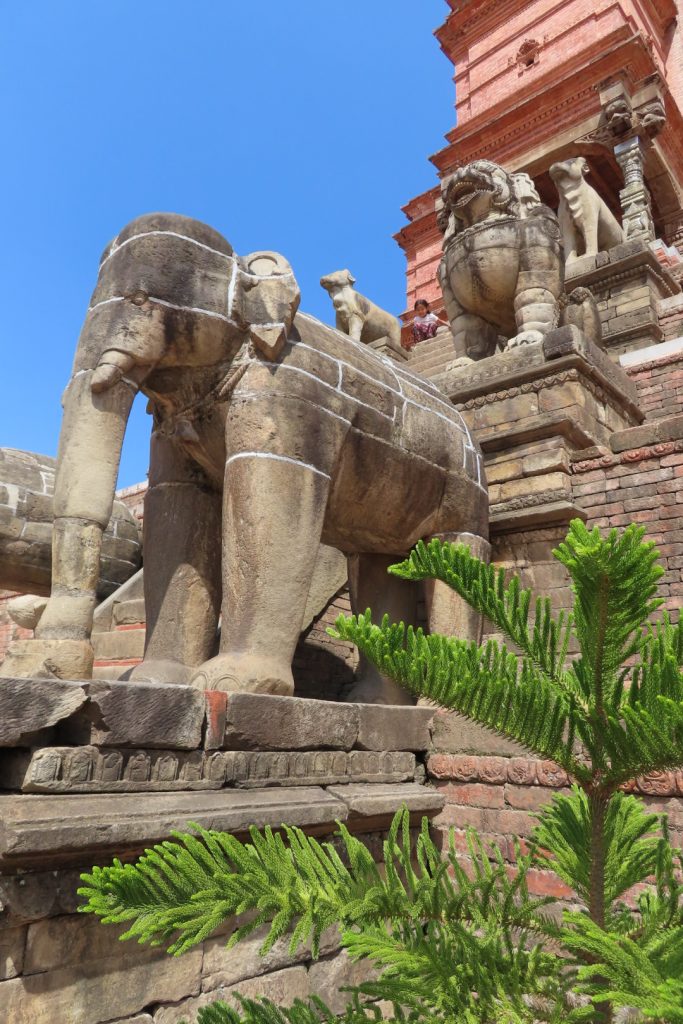
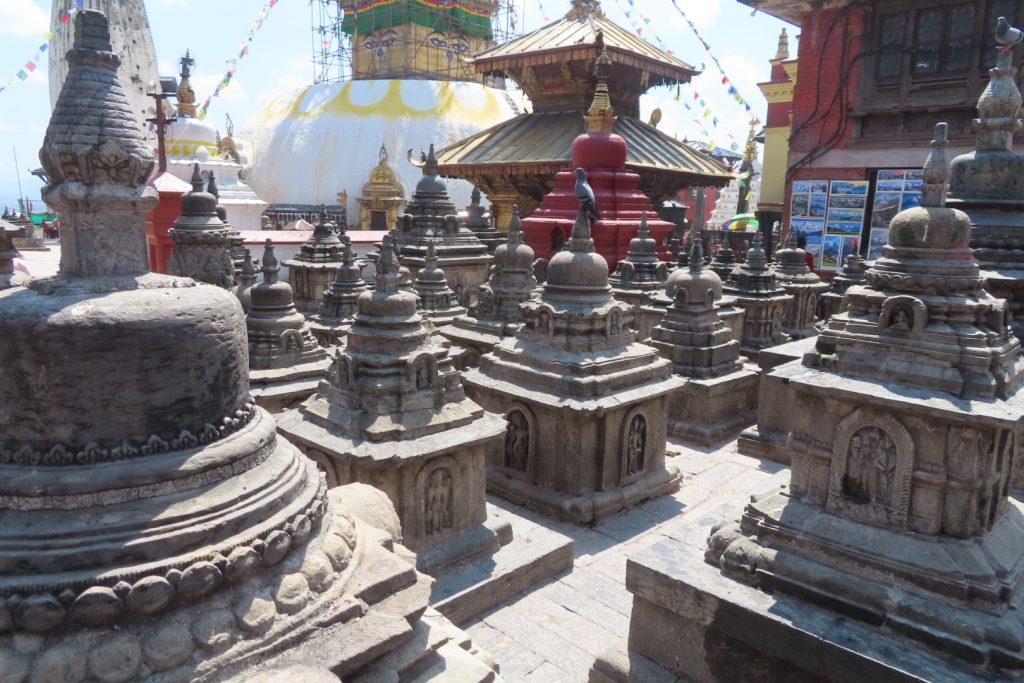
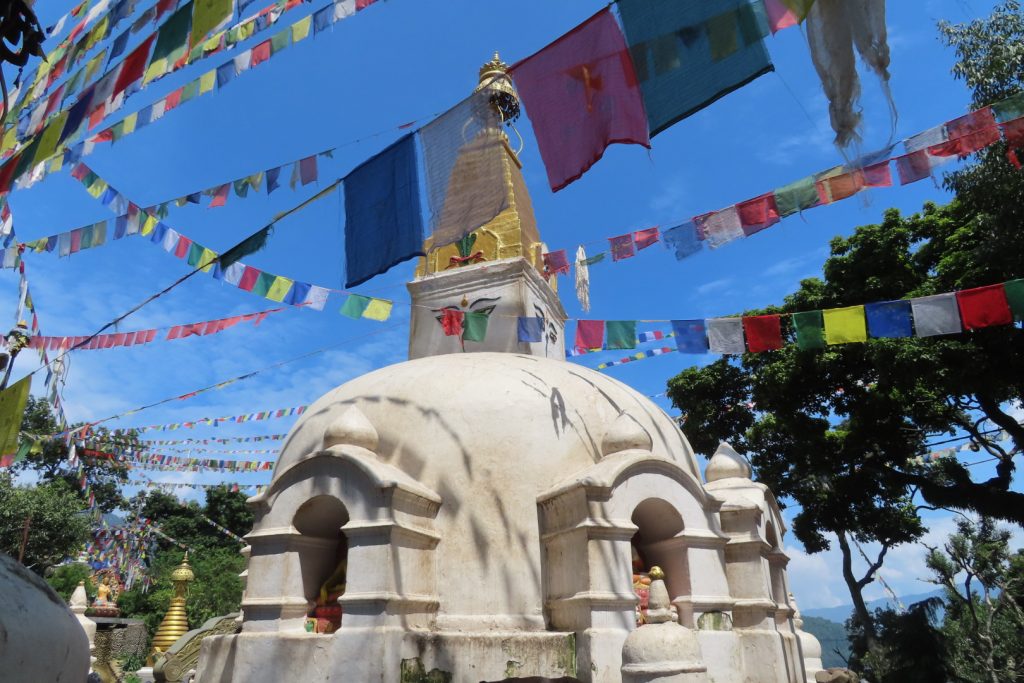
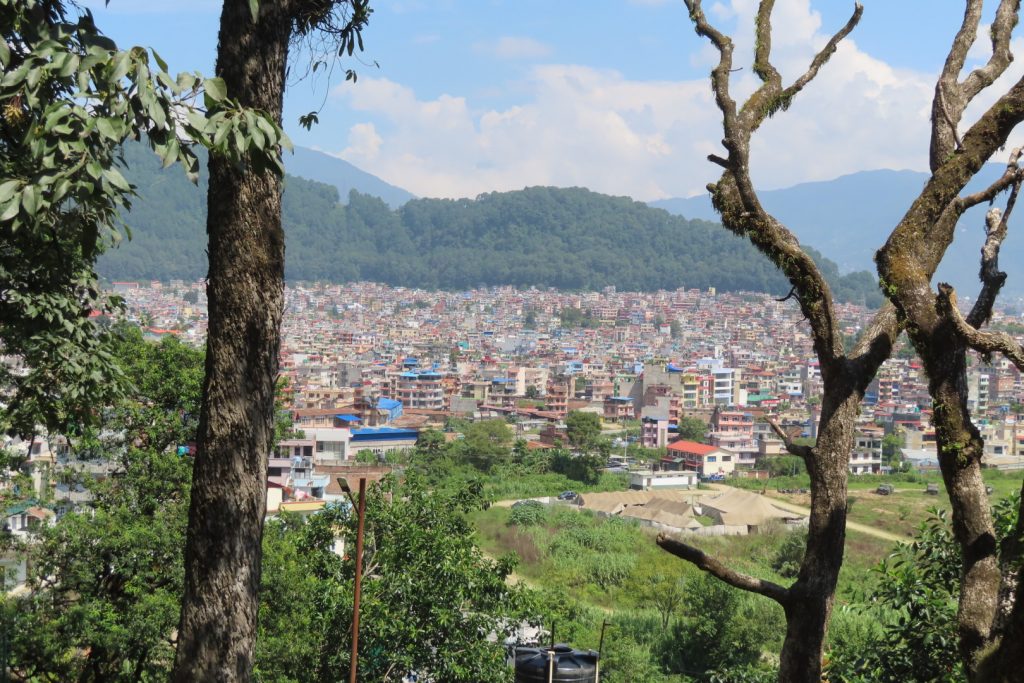
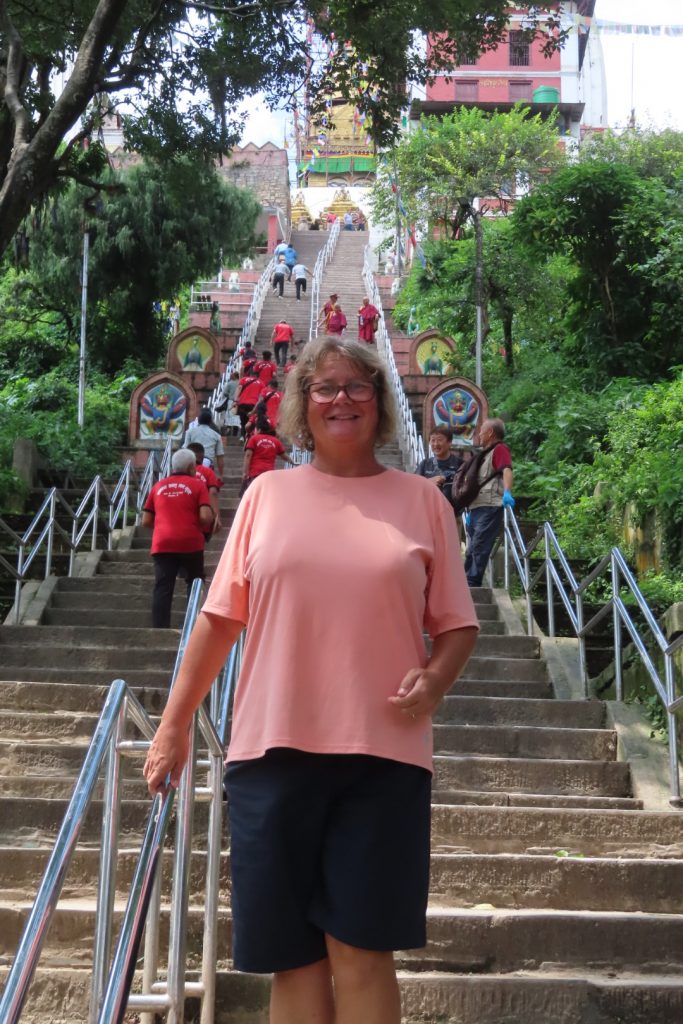
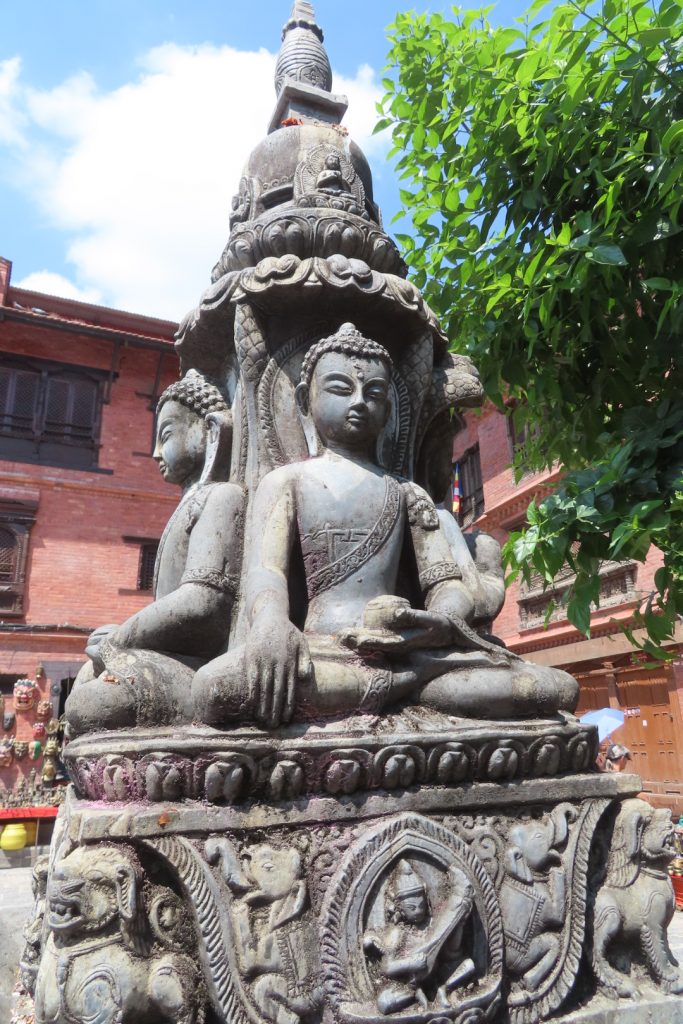
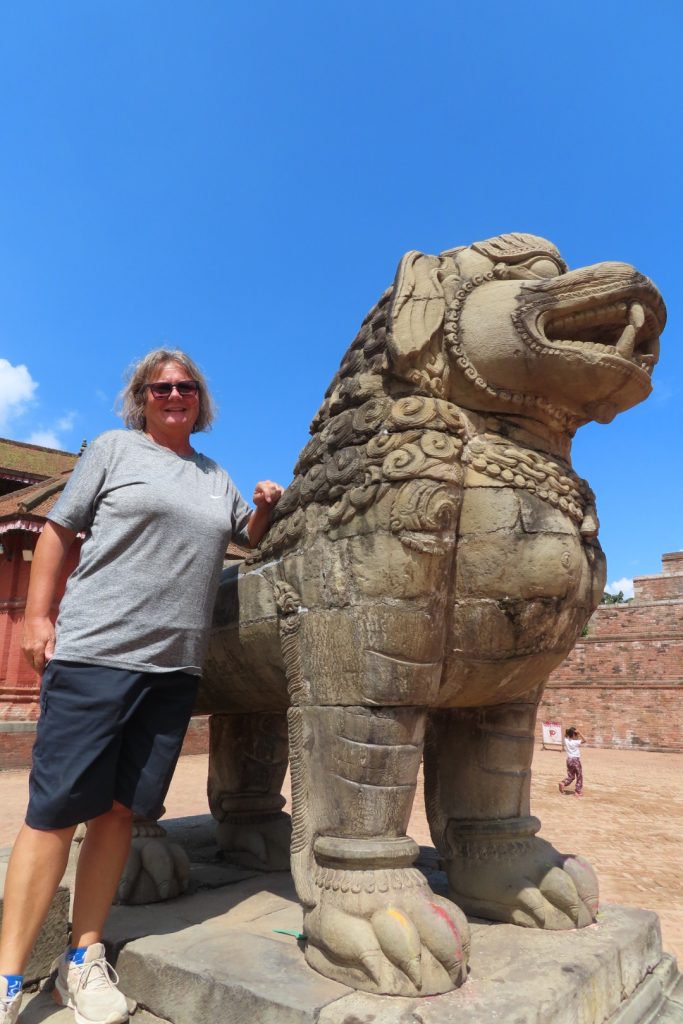
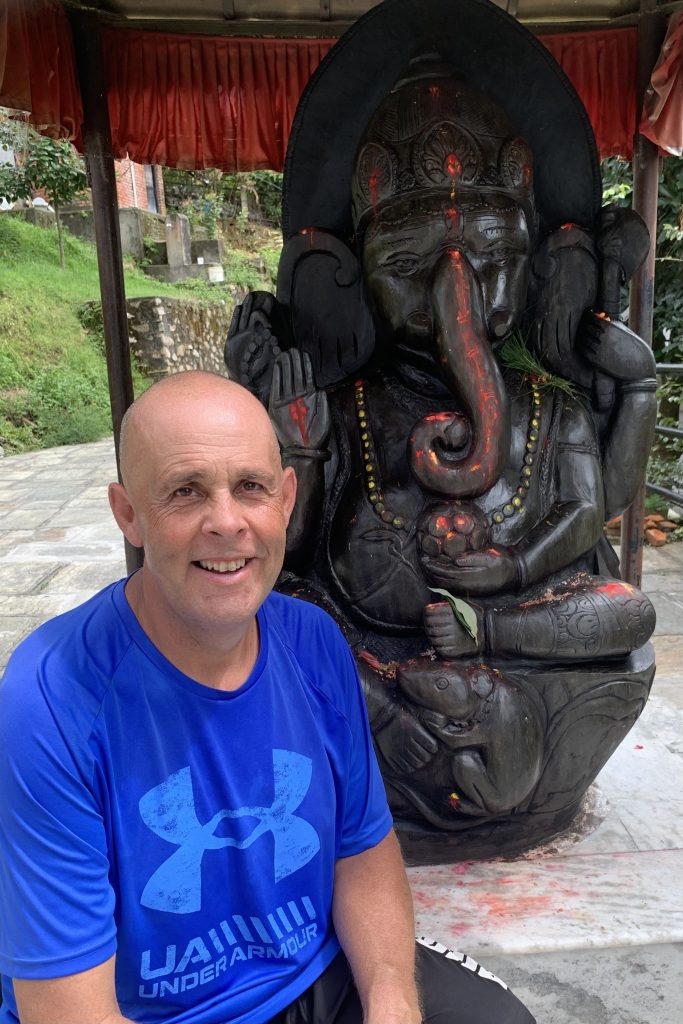

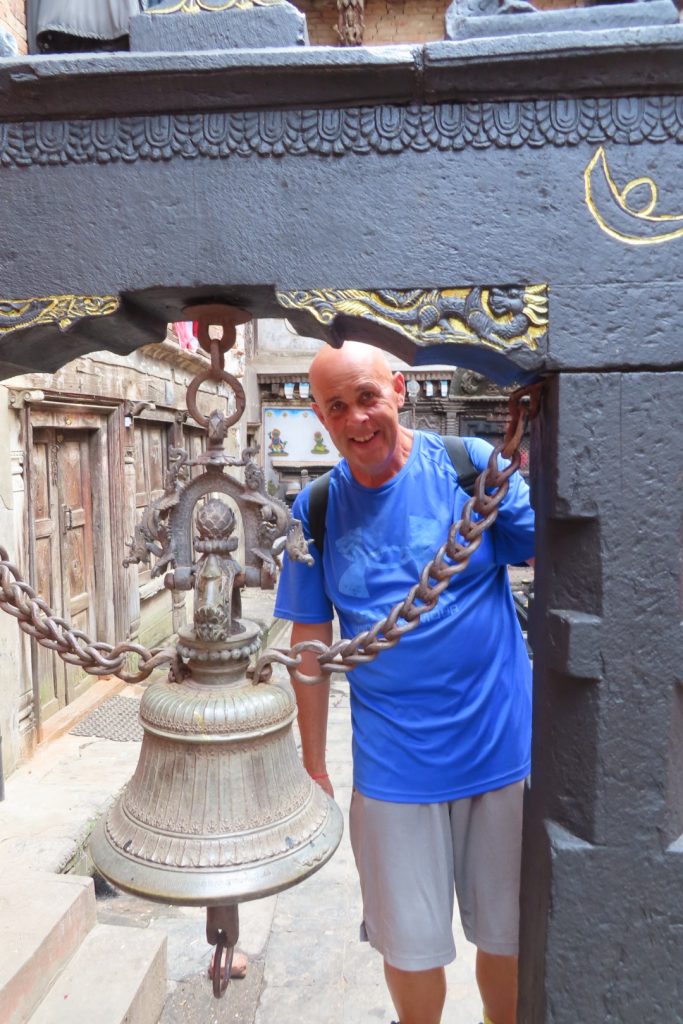
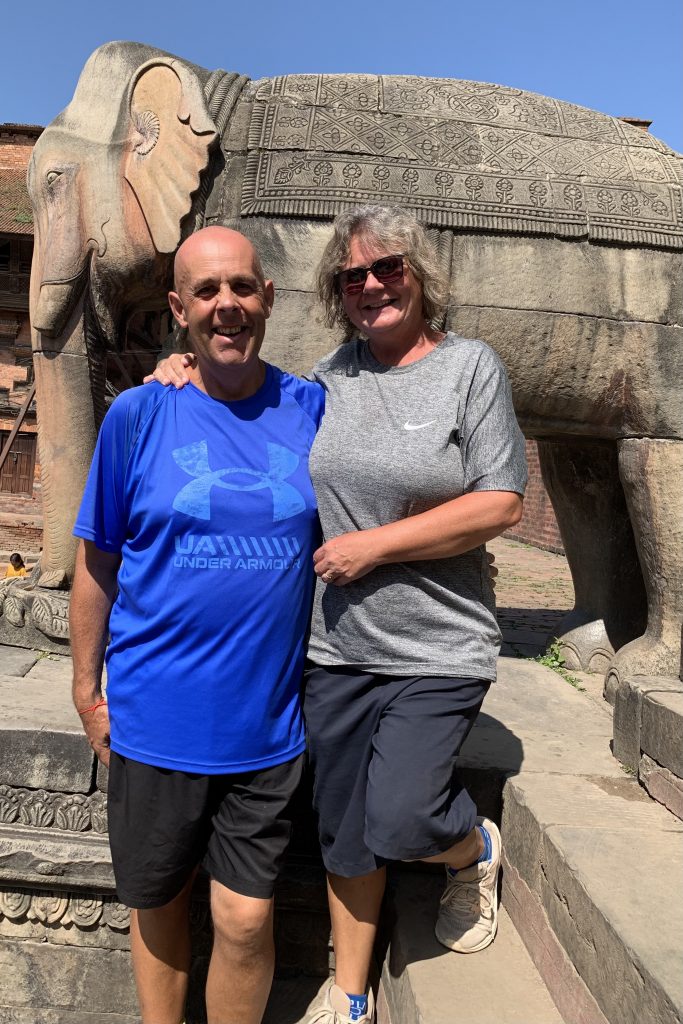
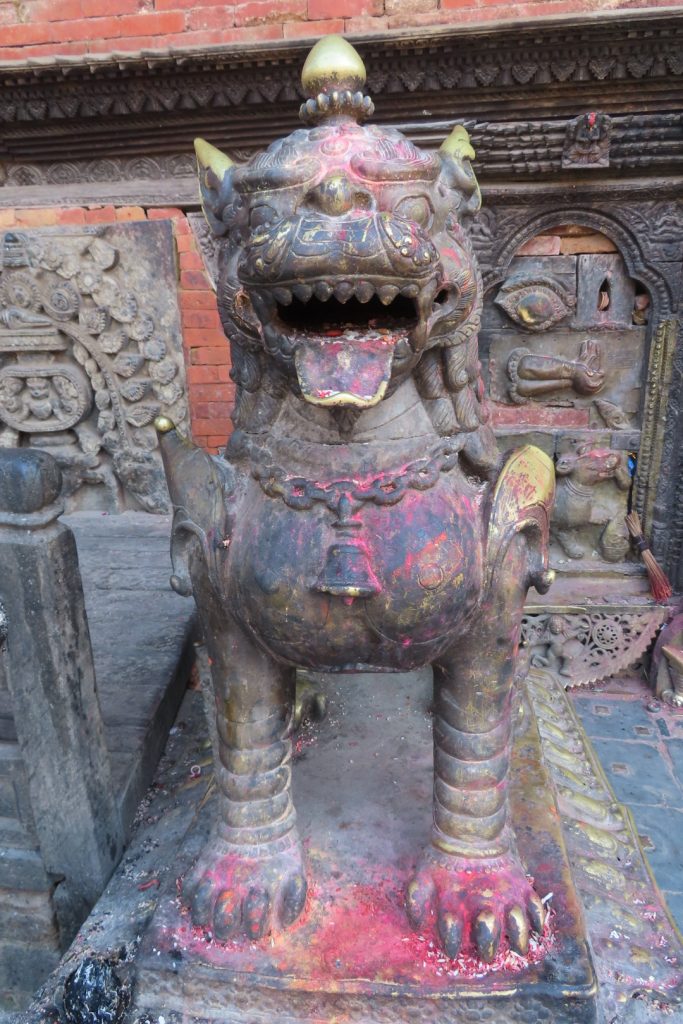

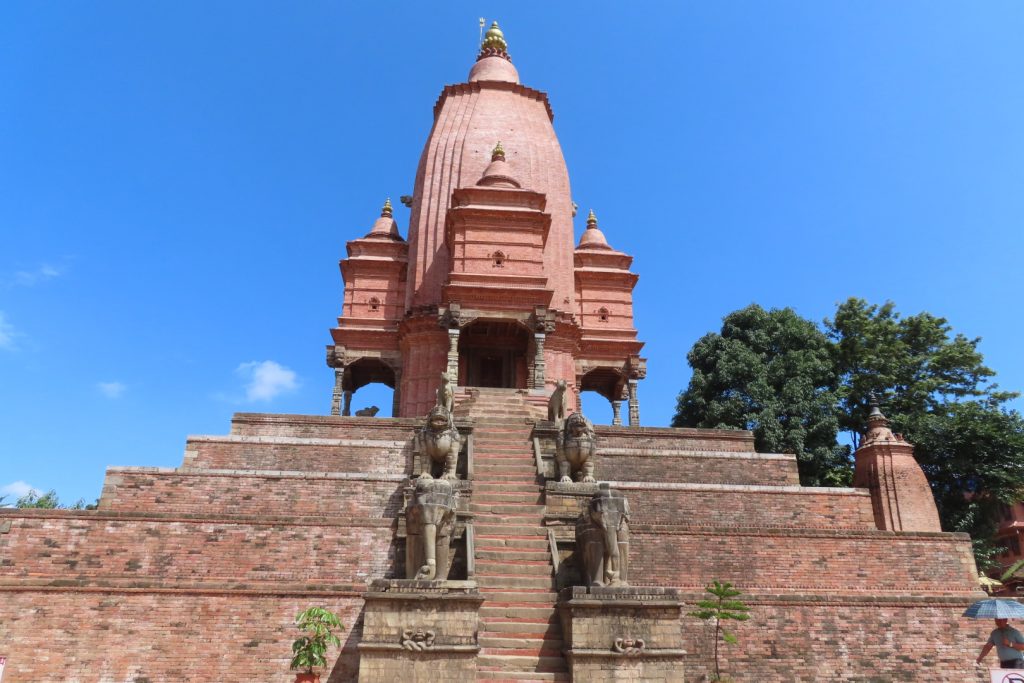
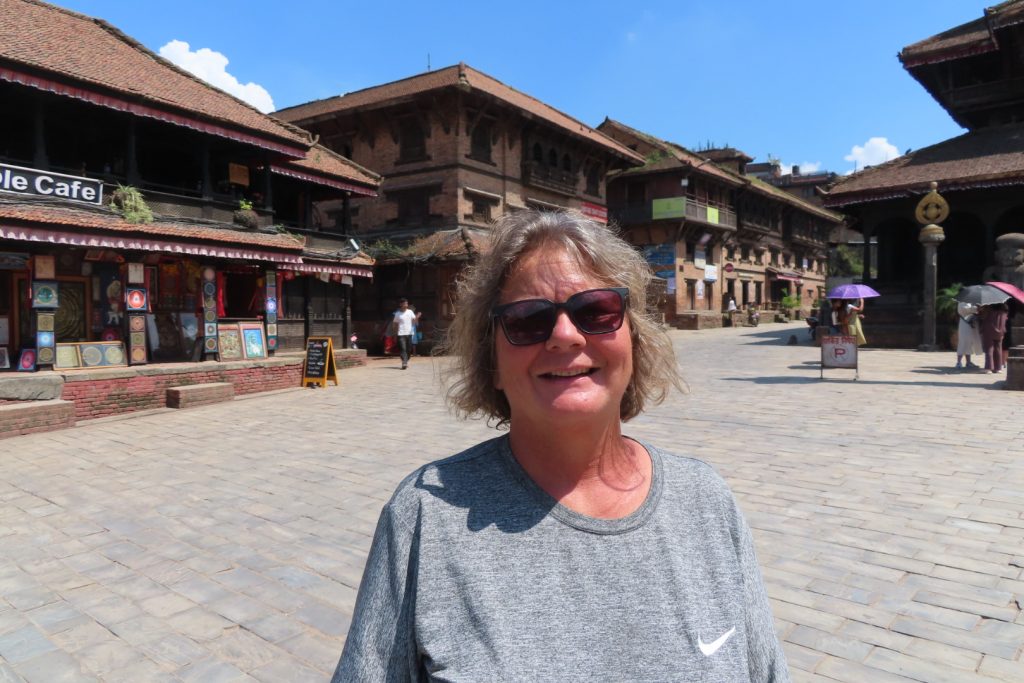
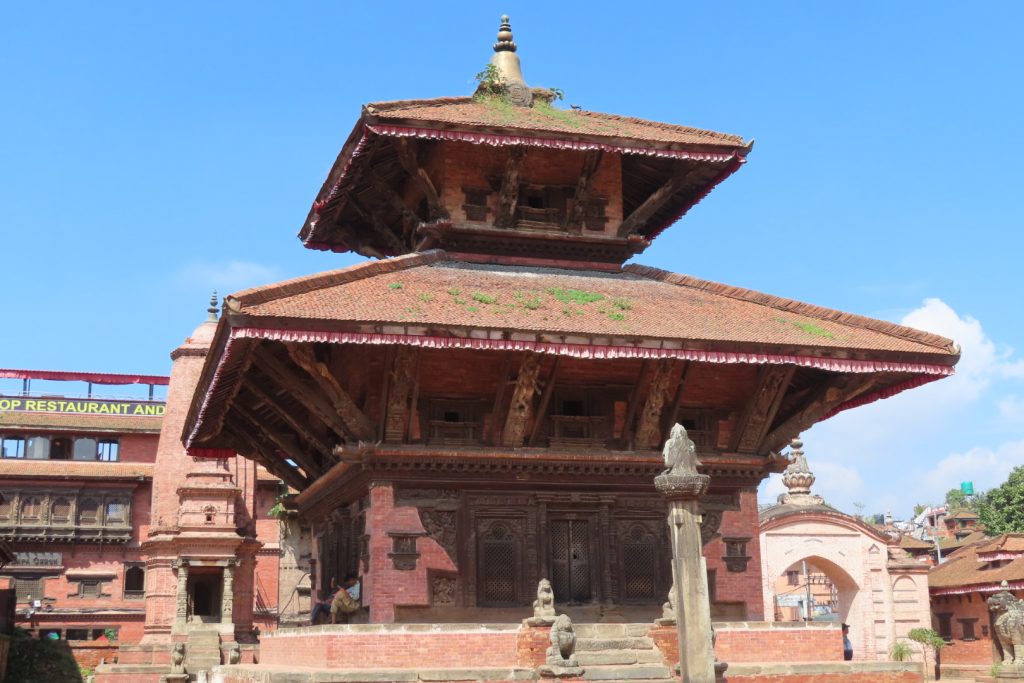
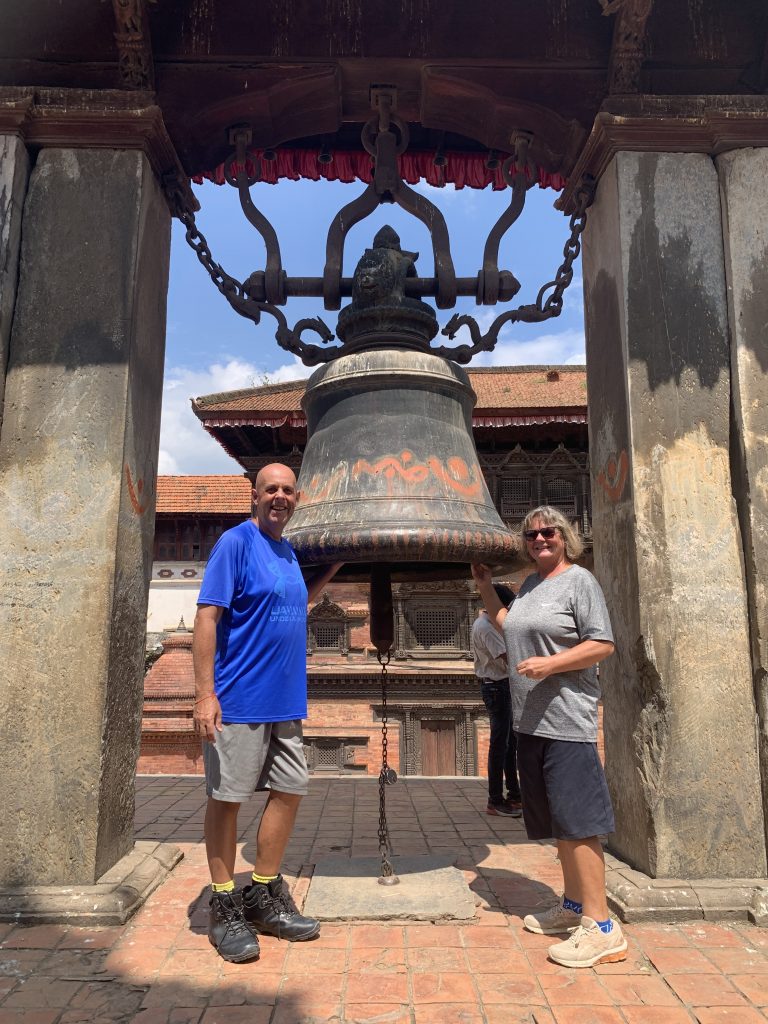
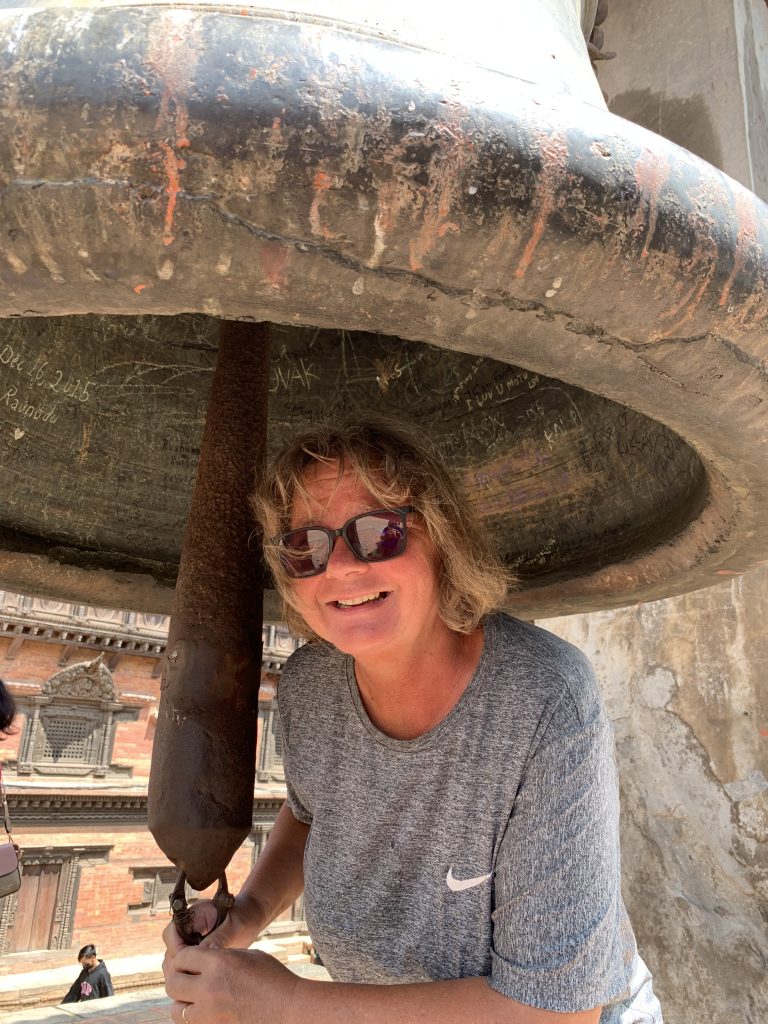
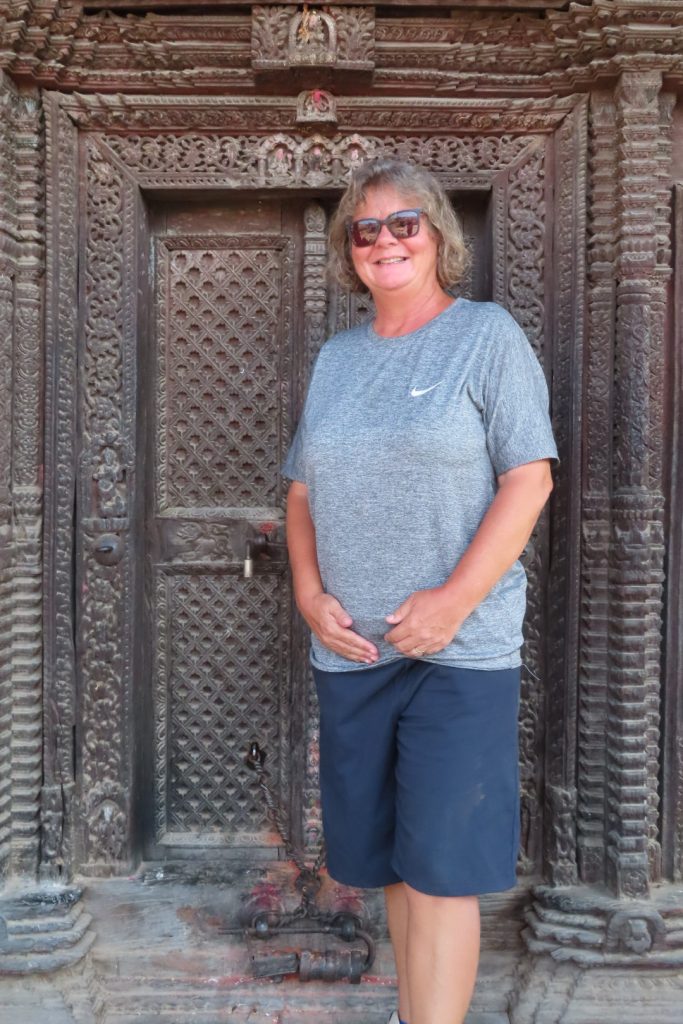
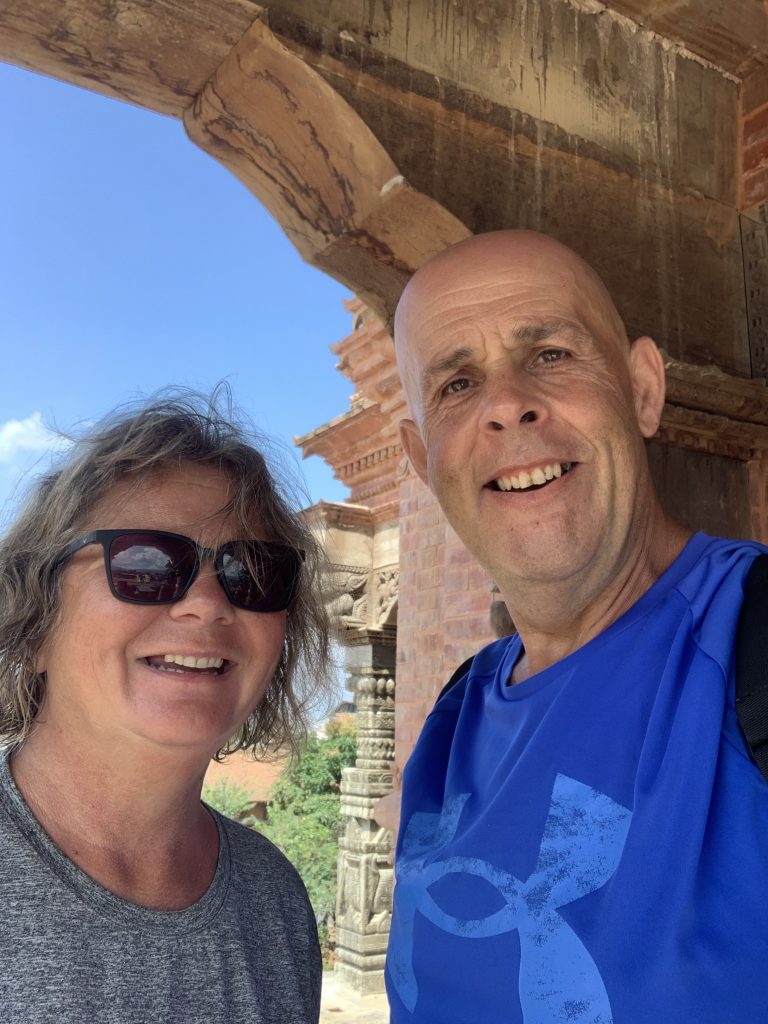
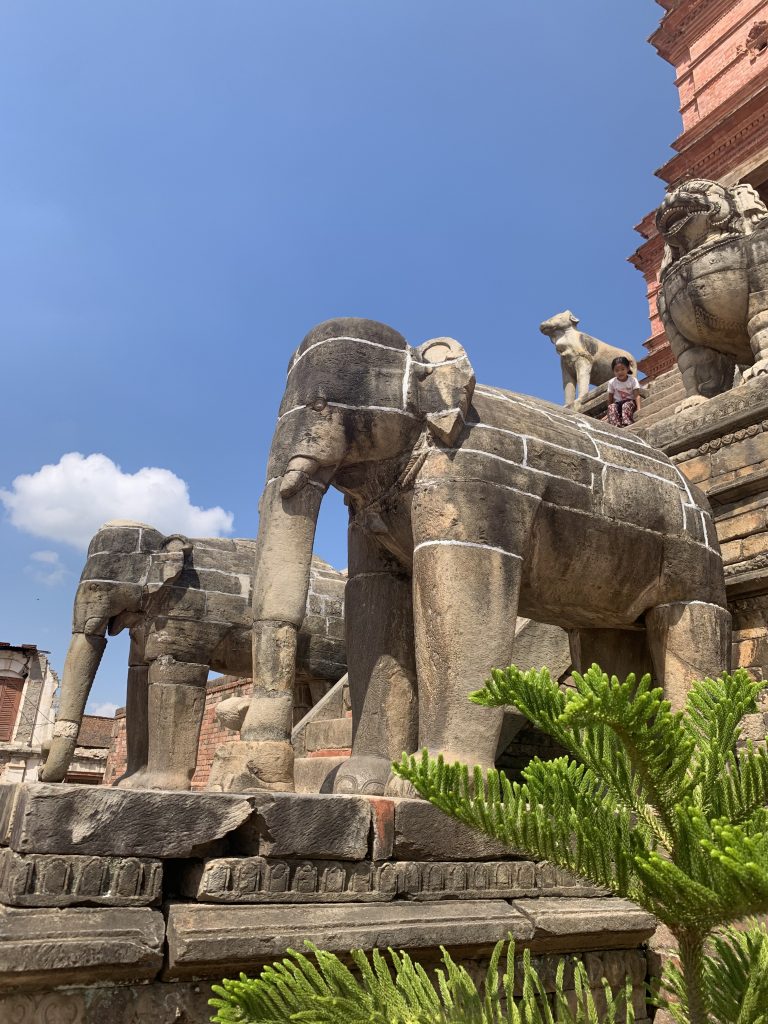
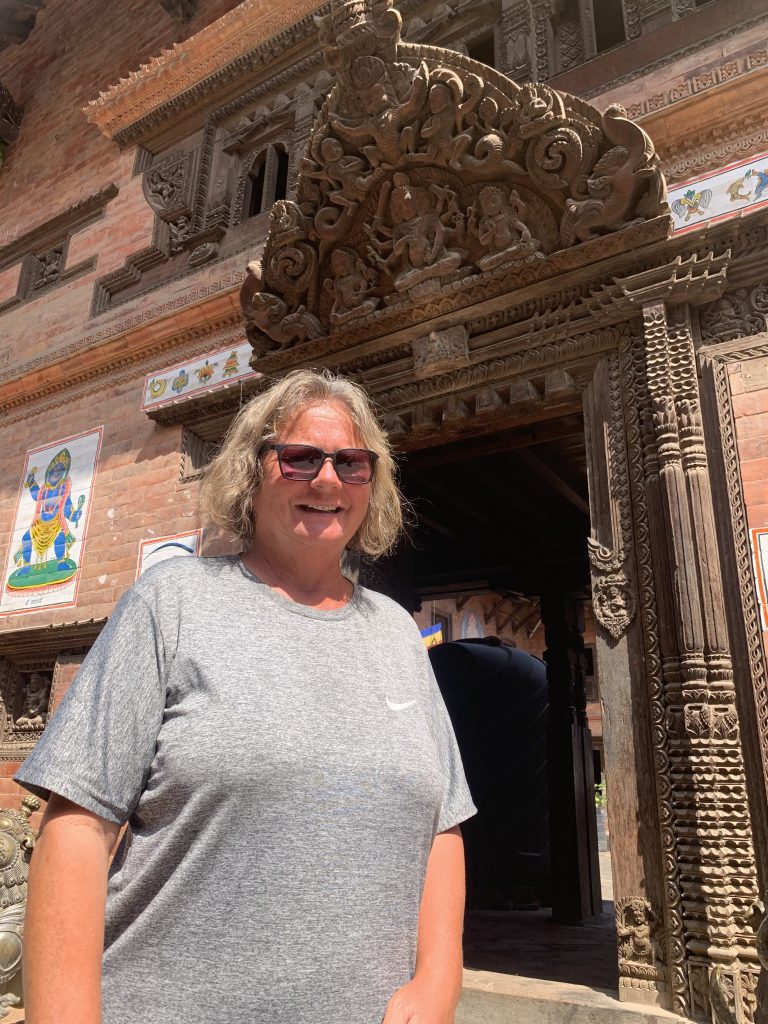
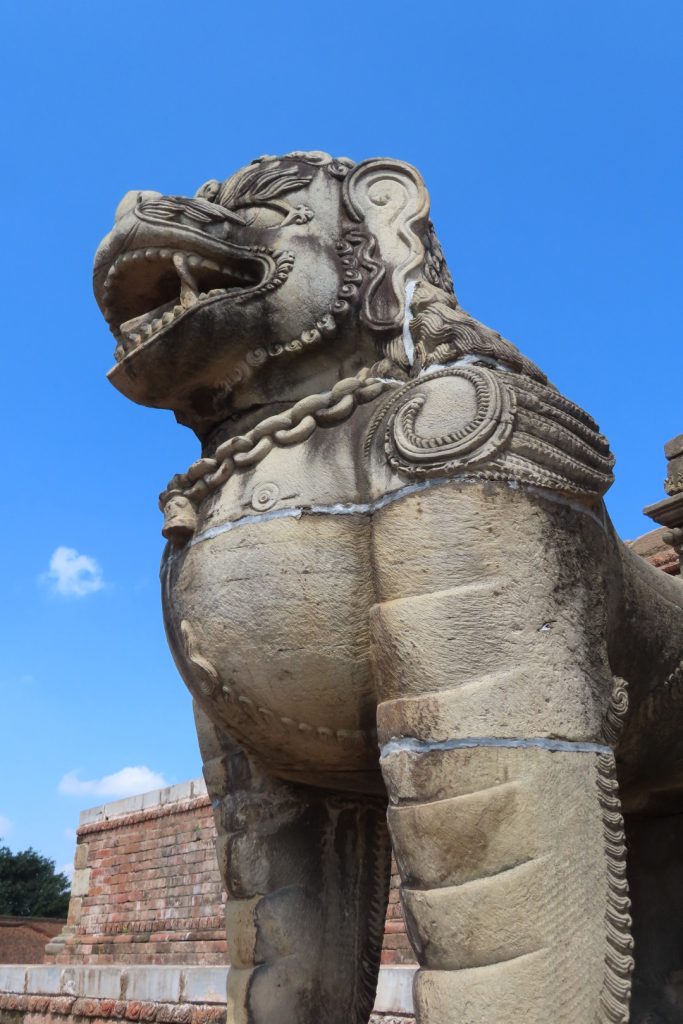
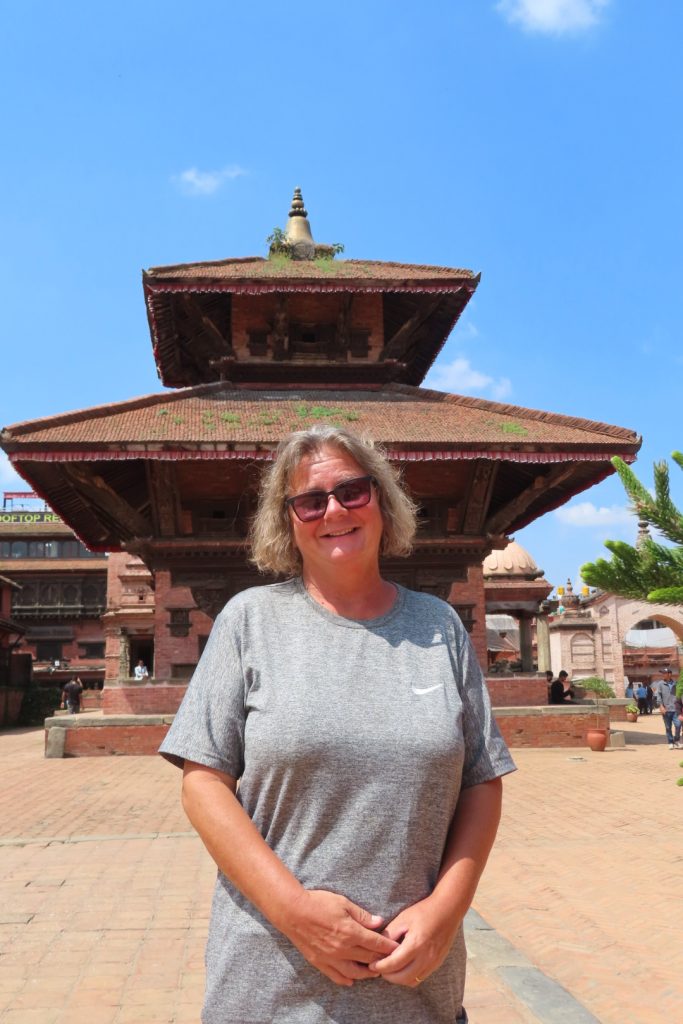
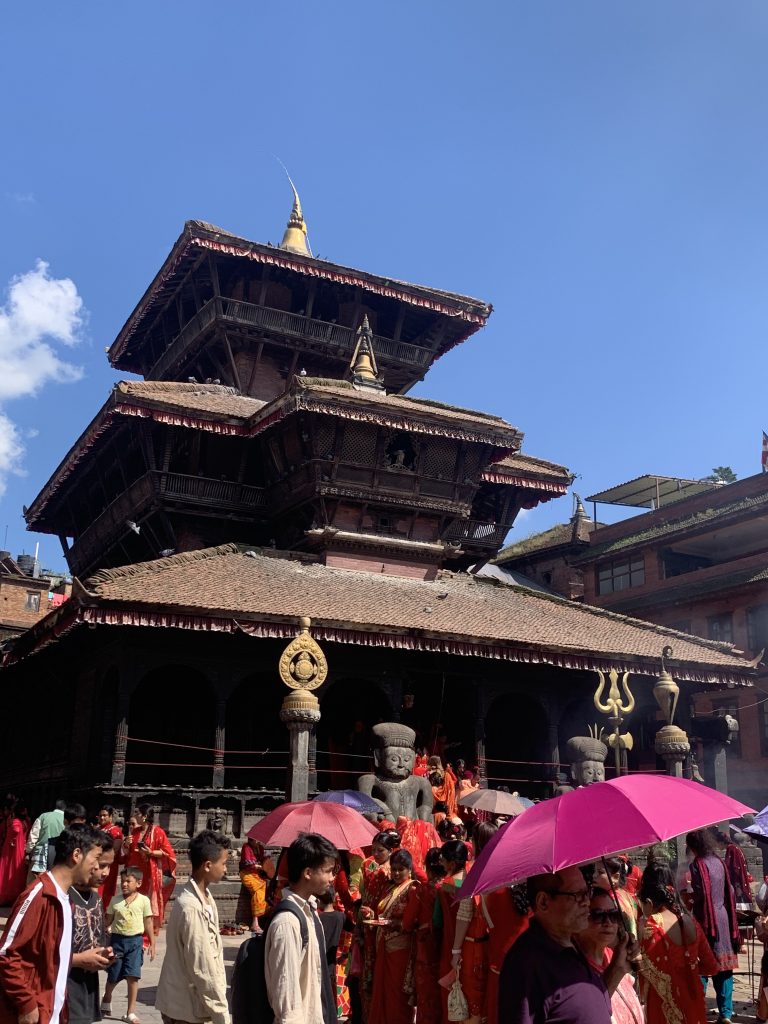
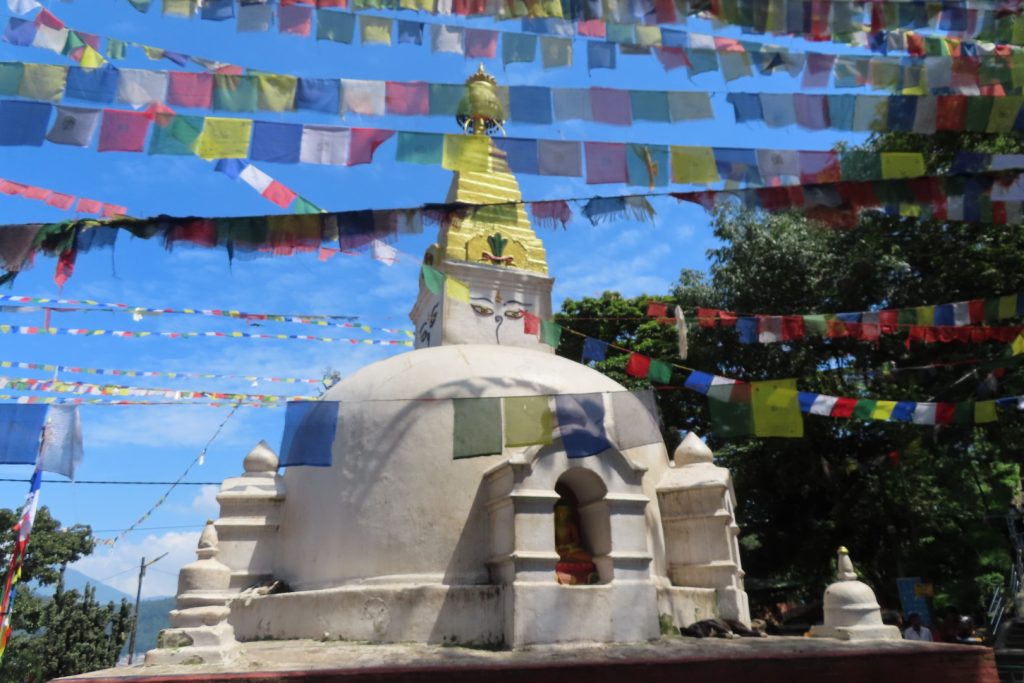
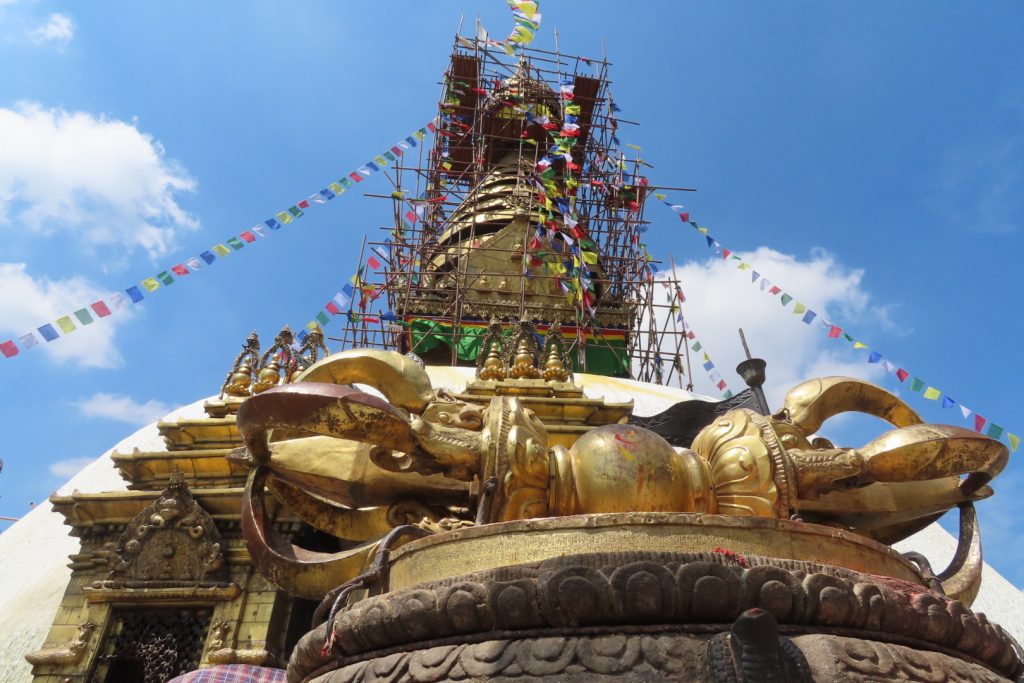


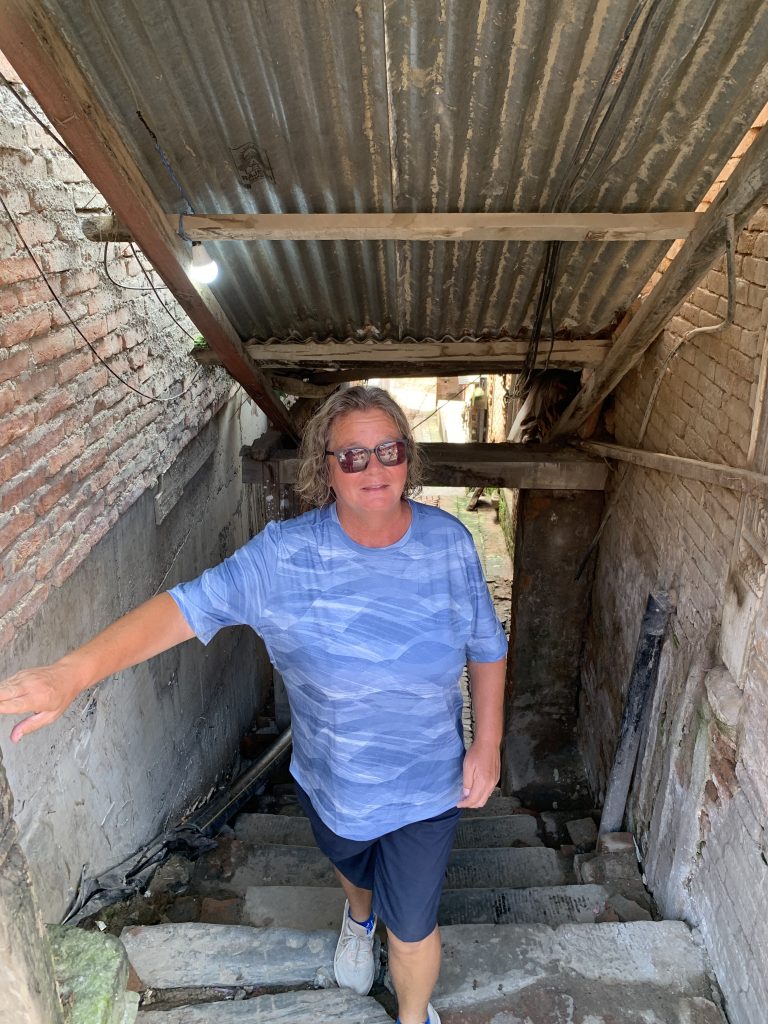
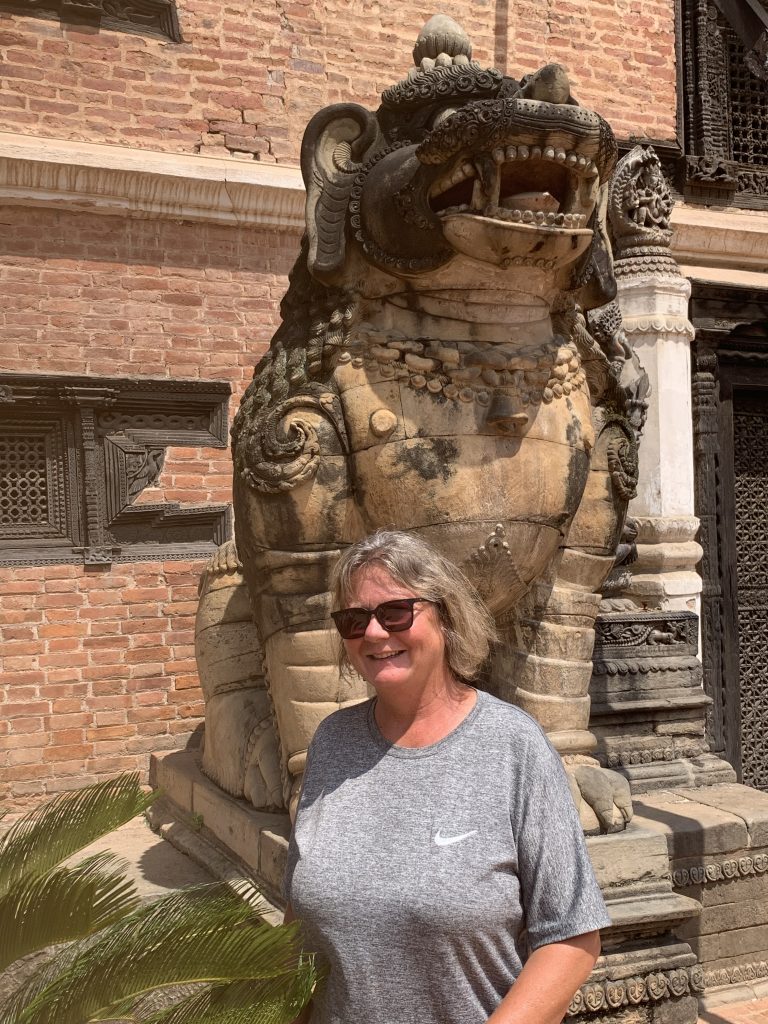

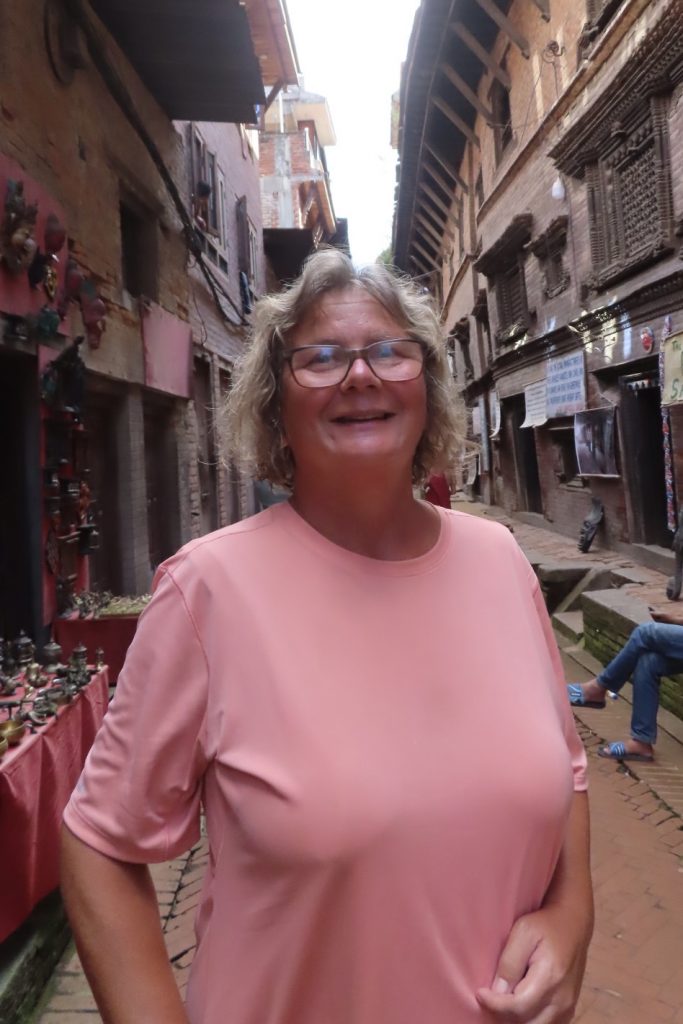
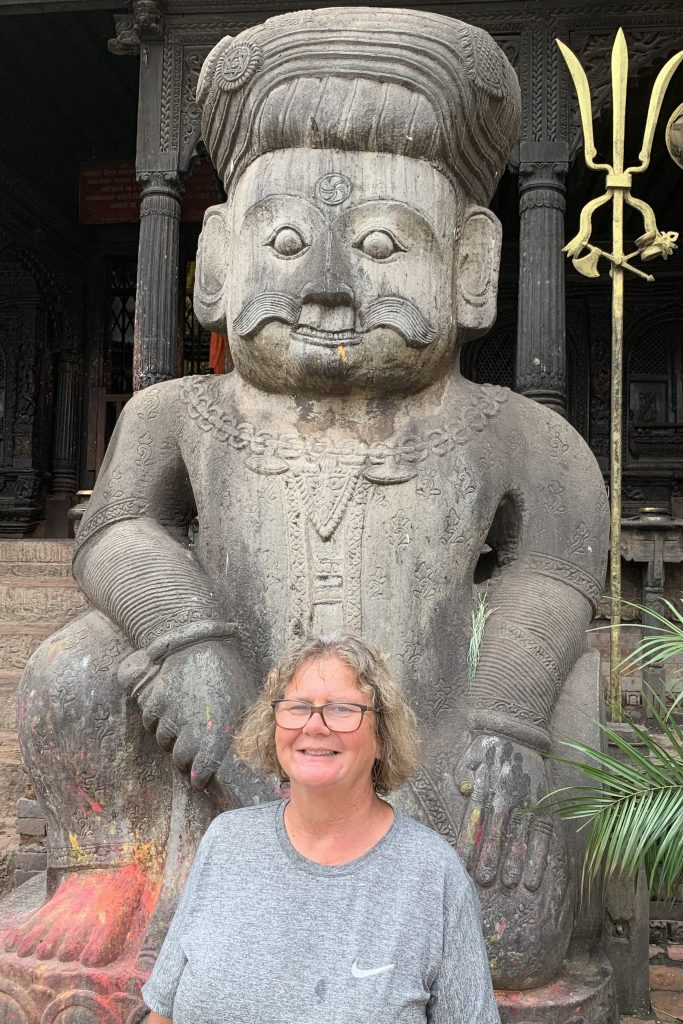

So lovely to see both your smiling faces, loving living the travel journey with you both. B
Thanks B, looks like we’ll be back in NZ around Christmas to see Bex – hopefully catch-up for a coffee/wine.
Wow , wonderfull
Thanks Cecilia.
We are really loving Nepal, it is such an amazing country.
You should visit and experience the amazing culture and food..
Alan and Helena
Very beautifully described. I felt like travelling with you while reading it. We are very happy to be a small part of your beautiful trip. And very lovely pictures. 🥰
We have loved our 7 days staying with your family and will miss the lovely breakfasts, garden and our chats. Enjoy your new job and good luck with your future studies.
Looks like a great place to add to the list of places to visit!
You definitely need to do that, The 7 days in Bhaktapur (most people only spend 1 day) really gave us an insight into the Nepalese way of life and has definitely simplified the rest of our time in Nepal.